.
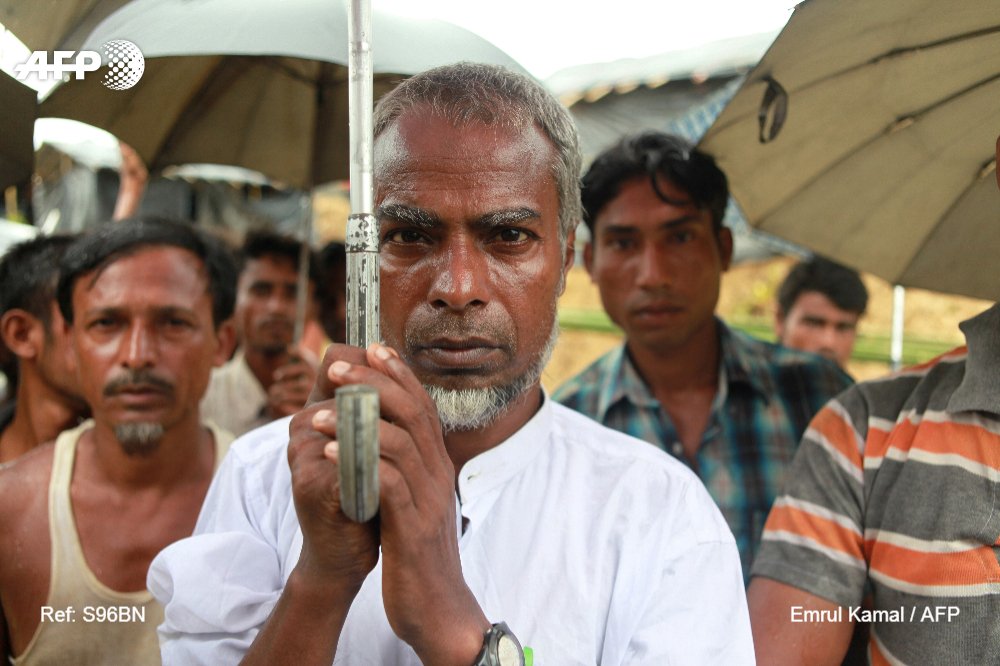
Rohingyas relive village massacre in Myanmar: The Straits Tmes, 10 September 2017
BALUKHALI, BANGLADESH (AFP) - Myanmar soldiers barred the entrance to
the mosque, men arrived with machetes and petrol cans and then,
according to Rohingya Muslim eyewitnesses, the killing began.
"Those that ran were hacked to death. Others that got away were shot
by the army," said Master Kamal, a 53-year-old teacher, and one of the
survivors of the massacre in Aung Sit Pyin in Myanmar's Rakhine state.
"They were burning houses. We fled to save our lives." Kamal told AFP
he saw three neighbours - including a father and son - butchered as he
fled, making a 10-day trek across monsoon-drenched hills, rivers and
fields to Bangladesh.
Interviews with about 10 people from the village who found refuge at Balukhali camp in Bangladesh revealed horrific details of the events in Aung Sit Pyin on Aug 25.
Interviews with about 10 people from the village who found refuge at Balukhali camp in Bangladesh revealed horrific details of the events in Aung Sit Pyin on Aug 25.
That was the day Rohingya Muslim militants attacked police posts
across Rakhine, sparking a violent crackdown that has so far driven
almost 300,000 of Myanmar's 1.1 million Rohingya population across the
border.
The stateless Muslim minority blames Myanmar's army and Buddhist mobs for the widespread killings.
The testimony is difficult to verify because access to Rakhine is heavily restricted.
Myanmar's government has blamed Rohingya militants for the
atrocities, including firebombing their own villages and killing
civilians suspected of collaborating with the army.
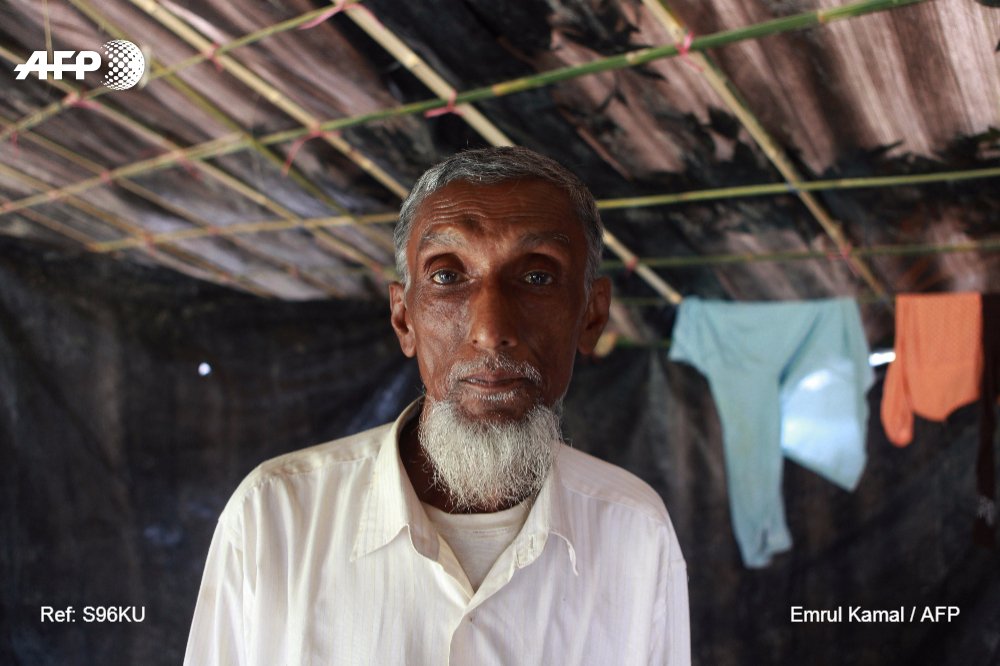
'Everything was burning'
Mohammad Amin, a 66-year-old farmer whose father was a village chief, said his family had lived in Aung Sit Pyin for three generations.
"This is the first time we have fled. I have never witnessed violence like this," said the wiry farmer, wrapped in a tattered blue sarong in a mud-splattered Balukhali shanty.
When the shooting began he ran into the jungle to hide, saying he crossed a river to avoid soldiers pursuing civilians.
Families scattered. Amin spent days searching for his seven sons and daughters in the brush, dodging military patrols.
"From the other side of the river, I could see everything burning," he said.
Myanmar's army says at least 400 people, mainly militants, have been killed in the violence.
But there are fears that figure is underestimated, with other Rakhine villages also the target of alleged massacres.
Many of the refugees from Aung Sit Pyin reported seeing people slaughtered, or passing corpses cut down or burned as they sprinted in all directions from advancing forces.
Twenty-six families who made it out are now cramped underneath a large tarpaulin sheet in a muddy field behind Balukhali. There are no toilets nor clean water.
Some said the journey took seven days. Others said they spent up to 12 days hiding from the military and tackling steep passes and rain-soaked jungle to reach Bangladesh.
Anwara Begum said she plunged into a river with her four-year-old son, as soldiers fired at fleeing villagers.
She clung to debris but lost contact with her other five children in the chaos, saying she hid terrified in the hills while helicopters buzzed overhead.
"I thought I would never see them again," the 35-year-old told AFP.
Her other five children aged 12 to 19 linked up with their father at the border and the family was reunited in Bangladesh, she said.
Others have been less fortunate.
Nearly 100 people have drowned trying to cross the Naf river on the border, their bodies washing up on the shore.
Others have arrived bearing injuries consistent with bullet wounds, or missing limbs from alleged landmines placed to deter evacuees from returning.

Jamal Hussain, 12-year-old: photo by AFP, 10 September 2017
The sprawling camps inside Bangladesh have swelled with newcomers
like Jamal Hussain, 12, who said his five older brothers were cut down
by machine gun fire in Aung Sit Pyin as they ran. He has not seen his
parents or seven sisters since.
"We were all together but suddenly they started firing. I could not
look back, because I thought I would die," the softly-spoken boy said.
"When I was hiding, I remembered the whole thing. I started crying."
On his shoulder was a welt and scar the size of a small coin, evidence
of the splinter of shrapnel or bullet that he said struck his back and
passed through.
"At first I didn't know what happened, then people behind were saying there was blood on my back," he said.
Myanmar considers the Rohingya illegal migrants from Bangladesh and
denies them citizenship, even though many have lived in Rakhine for
generations.
Pressure is mounting on de-facto leader and Nobel peace laureate Aung Sung Suu Kyi to end the violence.
Impoverished Bangladesh has been overwhelmed by the influx of hundreds of thousands of Rohingya in the last two years.
For those squatting in the mud in Balukhali there is nowhere left to go.
Taking solace under a plastic sheet, mother of six Begum said she was prepared to "beg" for a living.
"If I have nothing to eat, I will eat soil, but I will never go back."
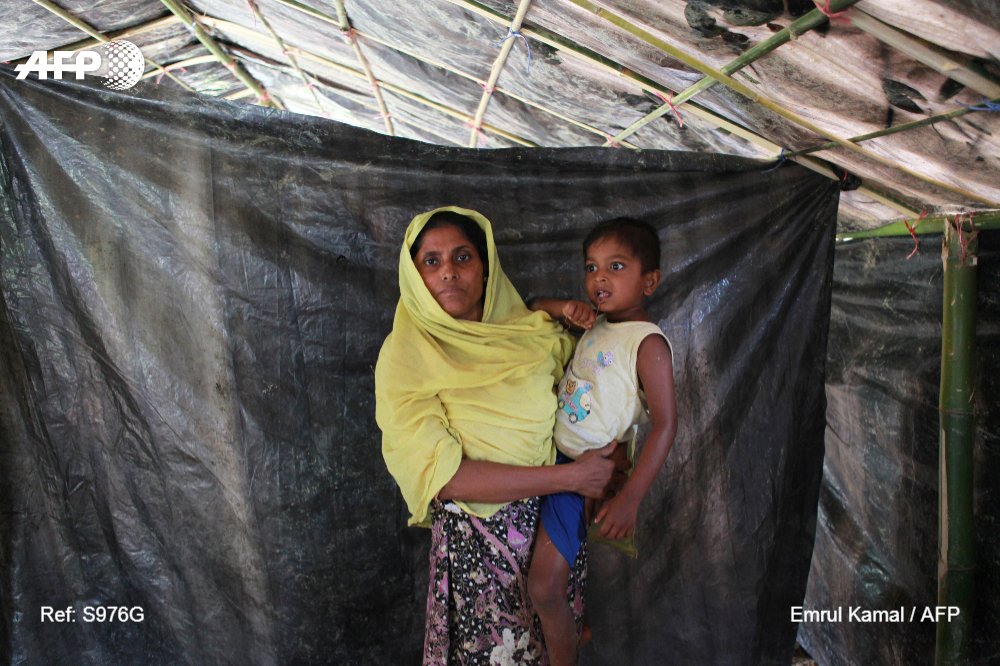
Anwara Begum, 35, with her four-year-old son: photo by AFP, 10 September 2017
Massacre at Tula Toli

Smoke billows above what is believed to be a burning village in Rakhine state as members of the Rohingya Muslim minority take shelter in a no-man’s land between Bangladesh and Myanmar.: photo by K.m. Asad/AFP/Getty via The Guardian, 7 September 2017
Massacre
at Tula Toli: Rohingya recall horror of Myanmar army attack:
Villagers who fled attack and crossed border into Bangladesh recall
seeing their family and neighbours killed: Oliver Holmes in Cox's Bazar,
The Guardian, 7 September 2017
It was the fast-flowing river that doomed the inhabitants of Tula Toli.
Snaking around the remote village on three sides, the
treacherous waters allowed Burmese soldiers to corner and hold people on
the river’s sandy banks. Some were shot on the spot. Others drowned in
the current as they tried to escape.
Zahir Ahmed made a panicked dash for the opposite bank, where he hid in thick jungle and watched his family’s last moments.
“I
was right next to the water,” he recalled in an interview a week later
at a refugee camp in neighbouring Bangladesh, his eyes bloodshot and his
shirt stained with sweat and dirt.
Ahmed said teenagers and adults were shot with rifles, while
babies and toddlers, including his youngest daughter, six-month old
Hasina, were thrown into the water.
He cried as he described seeing his wife and children die,
meticulously naming and counting them on both hands until he ran out of
fingers.
More
than 160,000 of Myanmar’s 1.1 million ethnic Rohingya minority have
fled to Bangladesh, bringing with them stories that they say describe
ethnic cleansing.
During interviews with more than a dozen Rohingya from Tula
Toli, the Guardian was told of what appeared to be devastating carnage
as Myanmar’s armed forces swept through the village on 30 August and
allegedly murdered scores of people.

Rohingya refugees in Cox’s Bazar on Tuesday: photo by Noor Alam for the Guardian, 7 September 2017
Those who escaped fled to the hills in the west to make the three-day trek to Myanmar’s border with Bangladesh. The rest were buried in a mass grave, villagers said.
Myanmar, where the majority of people are Buddhist, has blocked access to the
area, meaning the Guardian cannot independently corroborate the
villagers’ accounts.
Many of the interviews were conducted separately over two
days, however, and the villagers confirmed details of each other’s
statements without prompting.
The story of Tula Toli, while horrific, is not unique. The army, in retribution for guerrilla-style ambushes on 25 August by an emergent Rohingya militant group, has led a huge counteroffensive across northern Rakhine state.
Many Rohingya had already escaped. Communal clashes with
Buddhists in Rakhine prompted 140,000 Rohingya to leave their homes in
2012. Thousands have since died either at sea or in brutal jungle camps
run by people smugglers.
A United Nations report released this year detailed what happened to those that stayed. The
report described mass killings and gang rapes by the armed forces in
actions that “very likely” amounted to crimes against humanity.
The current wave of violence is the worst so far, and rights
groups have said it could constitute a final campaign to rid Myanmar of
the Rohingya. Satellites have recorded images of whole villages burnt
to the ground.
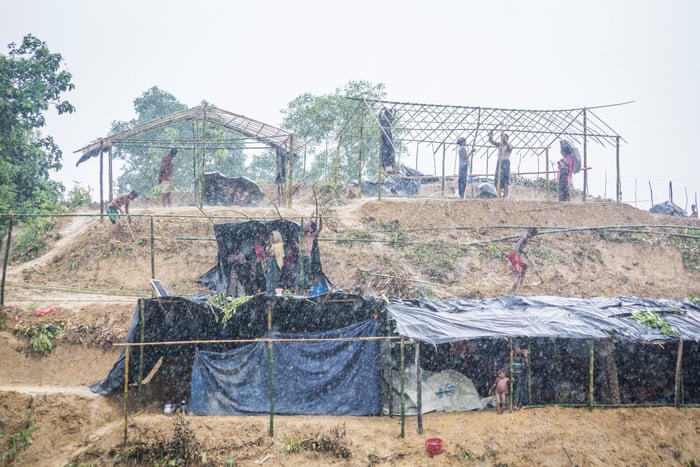
Rohingya refugees in Cox’s Bazar: photo by Noor Alam for the Guardian, 7 September 2017
All UN aid work in the conflict area has been blocked.
Aung San Suu Kyi’s administration, which did not immediately respond to
a request for comment, has said it is fighting “extremist terrorists”
who are burning their own villages.
Accounts of cruel sectarian attacks by Rohingya militants on Hindus and Buddhists in Rakhine have also surfaced. Around 26,000 non-Muslims have been displaced in the violence.
Accounts of cruel sectarian attacks by Rohingya militants on Hindus and Buddhists in Rakhine have also surfaced. Around 26,000 non-Muslims have been displaced in the violence.
The subsistence farmers of Tula Toli, who spent their lives growing rice and chillies, said there were no militants in their village when the army attacked.
Here are their stories:
Khaled Hossein, 29, labourer
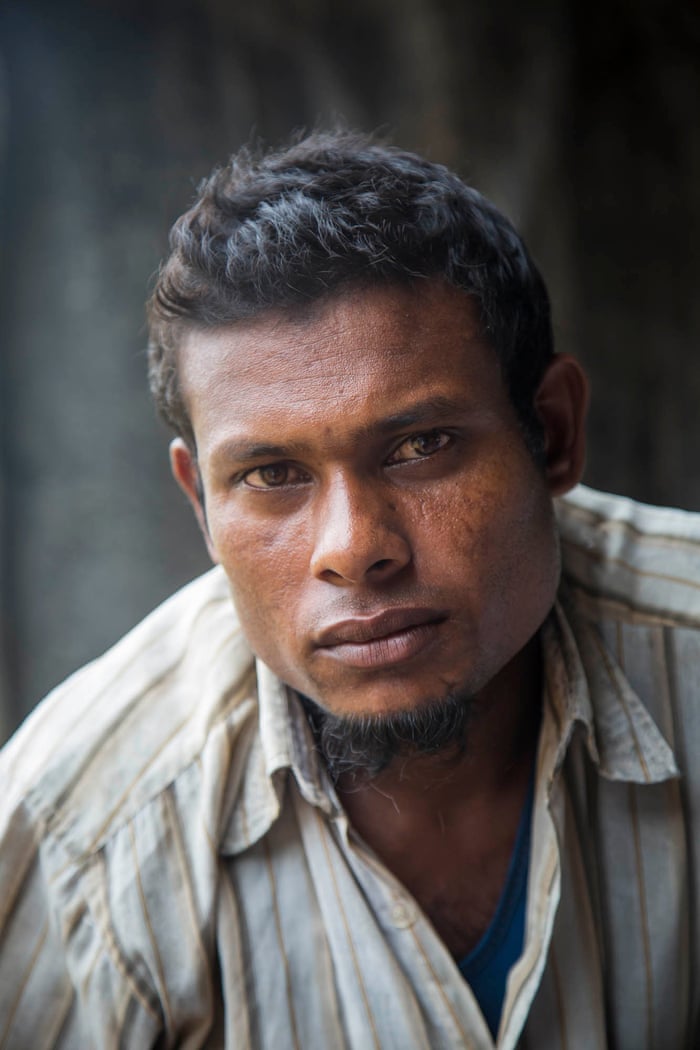
Khaled Hossein: photo by Noor Alam for the Guardian, 7 September 2017
Three days before the massacre, Hossein said about 90 soldiers ordered the village’s several hundred residents to an area east of the settlement, a place locals call “the sands” for its infertile ground.
“Their leader had two stars on his shoulder. He told us: ‘Rumours are being spread around by people in the village that soldiers have been killing people in Rakhine. But you should all keep farming and fishing. The one thing we ask is that if you see soldiers, you don’t run away. If you run, we will shoot.’
“After the speech, the soldiers went from house to house. They were with [local Rakhine Buddhists] and took everything they could find that was valuable: gold, cash, clothes, potatoes and rice. They smashed up houses of three or four people they said had been spreading rumours. They were looking for fighters. The Buddhists had told them about fighters, but there were none there.”
Petam Ali, 30, rice distributor
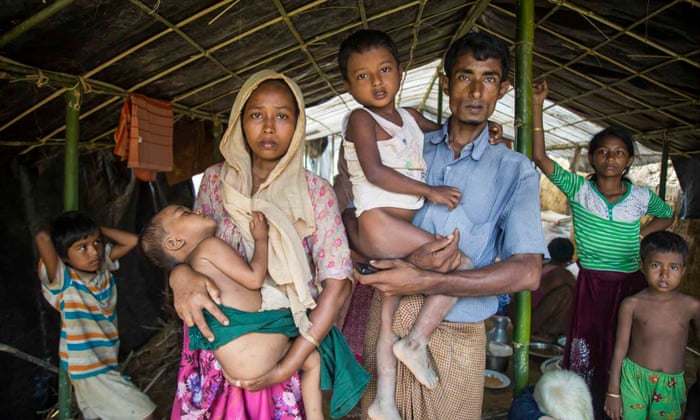
Petam Ali: photo by Noor Alam for the Guardian, 7 September 2017
A day before the attack, people from a village across the
river called Dual Toli swam over to escape the army. More than 10 died
in the river, according to Petam Ali, who sheltered some of the
displaced in his family home. They watched their village burn from
across the river.
At 3.30am the next day, Ali heard shooting but was not sure of the direction.
“I live on the north side of the village and the army had crossed the river further north and were marching down. I left my family to run out to the jungle to try and spot the soldiers. We waited until 8am and then they moved in, wearing dark green clothes. All of them were on foot.
“I ran back to get my family, but we were too rushed and my grandmother was too old to run. From the forest, we watched them burn our house. It was the first in Tula Toli to be burned.”
Ali’s home, an eight-bedroom wooden structure that he built with his three brothers for 16 members of their extended family, went up in flames fast. Its roof was covered in straw and leaves.
“The soldiers used rocket-propelled grenades, and they set fire to the houses with matches. Once they had gone past, I went back. All the houses were burned. In the road, I saw a dead man I recognised called Abu Shama. He had been shot in the chest. He was 85.”
In the ruins of his house, Ali saw the singed and decapitated corpse of his grandmother. “Her name was Rukeya Banu. She was 75. When I returned to the jungle, I described the whole incident to the rest. They burst into tears. We walked for three days.”
Kabir Ahmed, 55, rice farmer
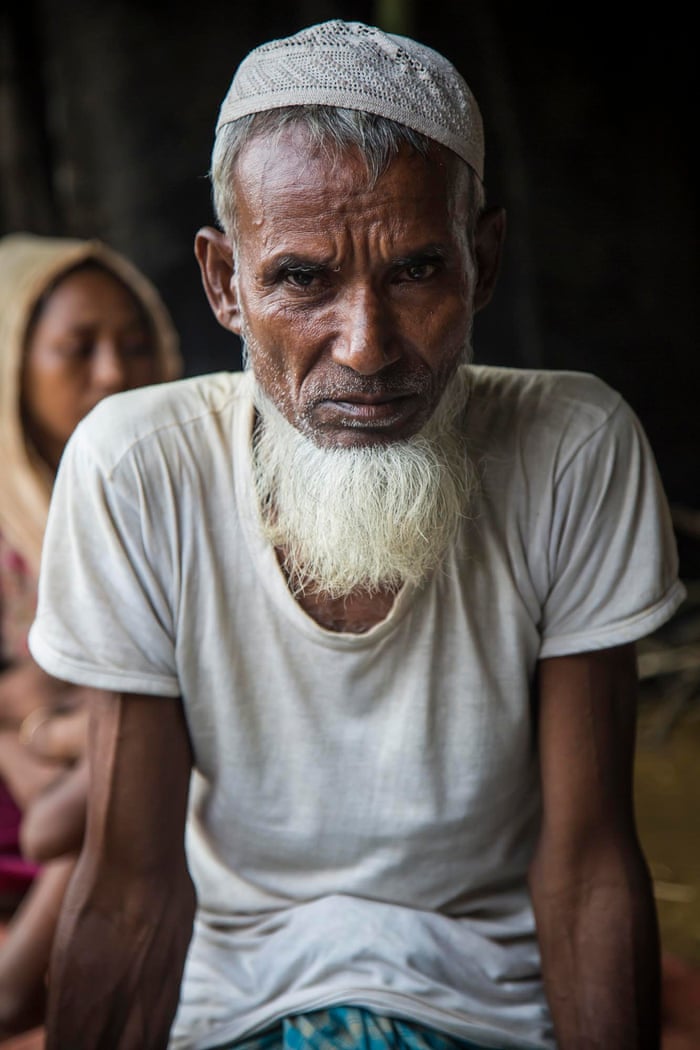
Kabir Ahmed: photo by Noor Alam for the Guardian, 7 September 2017
“When I heard the army attacking to the north, I jumped into the river,” said Kabir Ahmed. “My two sons came with me. They are 10 and 12.”
Eight members of his family died, he said, and two of his other sons who are unaccounted for.
“They threw the children into the river. My three-year-old granddaughter, Makarra, and Abul Fayez, my one-year-old grandson. I was hiding on the south side of the river. They gathered everyone together and told them to walk away. Then they shot them.
“We were on hills, hiding behind trees. In the evening, they collected all the bodies on the river bank, dug into the sands and burned them. It happened 40 metres away from me, on the other side of the river. They are buried two to three metres from the riverside.”
Zahir Ahmed, 55, rice farmer (Kabir's brother)

Zahir Ahmed: photo by Noor Alam for the Guardian, 7 September 2017
When the army arrived, Kabir Ahmed’s brother, Zahir, was also down by the river but in another spot. His son ran out of their home out in a panic.
“‘Leave us!’ he shouted. I jumped into the river and swam to the other side.
“I waited in the jungle, listening to the military firing. I was right next to the water. My son had gone to save other members of the family.” But he says all were killed.
He starts to count on his fingers those who died: “My wife, Rabia Begum, 50; my first son, Hamid Hassan, 35; his daughter, Nyema, two to three, and his son, Rashid, six to seven months; my second son, Nour Kamel, 12; my third son, Fayzul Kamel, 10; my fourth son, Ismail, seven; my eldest daughter, Safura 25; her husband, Azhir Hassan, 35; my second daughter, Sanzida, 14; my third daughter, Estafa, six; my fourth daughter, Shahina Begum, five; my sixth daughter, Nour Shomi, two to three; my seventh daughter, Hasina, six months old.
“I waited for five hours and then left.”
Mohammed Idriss, 35

Mohammed Idriss: photo by Noor Alam for the Guardian, 7 September 2017
All are hungry, and hundreds mob the rickety open-back trucks that local mosques have deployed to hand out donated clothes and food. For fear of being overwhelmed, volunteers throw shirts and trousers into the heaving crowd as they slowly drive along.
Children sleep on the mud in tents, their parents looking on anxiously, worried about flu or diarrhoea. At a clearing nearby, liquid excrement soaks the ground.
When heavy rains arrive, Tula Toli’s displaced shower in the
open. Women and children hold dented metal pots at the side of the tent
to collect fresh water.
Thousands have come to these hills, but the area is almost entirely absent of any belongings. Many fled in terror and few made it out of Myanmar with anything.
Thousands have come to these hills, but the area is almost entirely absent of any belongings. Many fled in terror and few made it out of Myanmar with anything.
Mohammed Idriss lived on the western side of Tula Toli, which borders an area thick with trees and he was able to collect some things before leaving. He holds up a white sack that has two large holes in it.
“I had a bag filled with oil, sugar, flour, 10,000 kyat, rice – things I had taken from the house when we left. When we got to the Naf river [the Bangladesh border], the Myanmar army started shooting.
“I jumped into the river and then hid behind a sandbank. The soldier came and shot at the bag, opened it and took everything. Once we got to the Bangladesh border, the guards told us to head here.”
He says he carried the bag for three days during the 10-mile trek through the trees and hills from Tula Toli.
At camp, Idriss gets a phone call to a dusty mobile, being charged by a cheap solar panel someone found in the market. On the line was another Rohingya refugee near the border. They had found a woman with a gunshot wound to her arm who matched the description of his missing sister.
“They thought she might have been Rabia, but she wasn’t,” he said. “We’re not sure if she was killed or not. We are hoping.”
A
Rohingya family fleeing Myanmar crosses a creek of the Naf river to
reach the border with Bangladesh.: photo by Bernat Armangue/AP, 5 September 2017
A Rohingya family fleeing Myanmar crosses a creek of the Naf river to reach the border with Bangladesh.: photo by Bernat Armangue/AP, 5 September 2017
A
Rohingya family crosses a fence while fleeing to Bangladesh. Tens of
thousands of members of the Muslim minority have entered Bangladesh in
the last week escaping deadly violence in northwestern Myanmar.: photo by European Pressphoto Agency, 5 September 2017
A
Rohingya family crosses a fence while fleeing to Bangladesh. Tens of
thousands of members of the Muslim minority have entered Bangladesh in
the last week escaping deadly violence in northwestern Myanmar.: photo by European Pressphoto Agency, 5 September 2017
Rohingya Muslims carry an elderly woman as they enter Bangladesh.: photo by European Pressphoto Agency, 5 September 2017
Rohingya Muslims carry an elderly woman as they enter Bangladesh.: photo by European Pressphoto Agency, 5 September 2017
A Rohingya child is carried on a sling while his family walk through rice fields after crossing the border into Bangladesh.: photo by Bernat Armangue/AP, 5 September 2017
A Rohingya child is carried on a sling while his family walk through rice fields after crossing the border into Bangladesh.: photo by Bernat Armangue/AP, 5 September 2017
An injured elderly woman and her relatives are rushed to a hospital on an auto rickshaw after they encountered a landmine while trying to cross into Bangladesh.: photo by Bernat Armangue/AP, 5 September 2017
An
injured elderly woman and her relatives are rushed to a hospital on an
auto rickshaw after they encountered a landmine while trying to cross
into Bangladesh.: photo by Bernat Armangue/AP, 5 September 2017
Rohingya children rest at a refugee camp near the Bangladeshi town of Teknaf.: photo by K. M. Asad/AFP, 5 September 2017
Rohingya children rest at a refugee camp near the Bangladeshi town of Teknaf.: photo by K. M. Asad/AFP, 5 September 2017
Rohingya refugees shelter under tarps at a refugee camp near Teknaf, Bangladesh.: photo by K. M. Asad/AFP, 5 September 2017
Rohingya refugees shelter under tarps at a refugee camp near Teknaf, Bangladesh.: photo by K. M. Asad/AFP, 5 September 2017
Rohingya refugees from Myanmar's Rakhine state shelter under tarps at a camp in Bangladesh.: photo by K. M. Asad/AFP, 5 September 2017
Rohingya refugees from Myanmar's Rakhine state shelter under tarps at a camp in Bangladesh.: photo by K. M. Asad/AFP, 5 September 2017
Displaced Rohingya refugees from Rakhine state in Myanmar rest near Ukhia, at the border between Bangladesh and Myanmar, as they flee violence.: photo by K.M. Asad/AFP/Getty Images, 5 September 2017
Displaced
Rohingya refugees from Rakhine state in Myanmar rest near Ukhia, at the
border between Bangladesh and Myanmar, as they flee violence.: photo by K.M. Asad/AFP/Getty Images, 5 September 2017
Rohingyas fleeing Myanmar walk through rice fields after crossing into Bangladesh.: photo by Bernat Armangue/AP, 5 September 2017
Rohingyas fleeing Myanmar walk through rice fields after crossing into Bangladesh.: photo by Bernat Armangue/AP, 5 September 2017
Who is burning down Rohingya villages?

Rohingya crisis: Seeing through the official story in Myanmar: Who is burning down Rohingya villages?, BBC
The 300,000 people who have
fled Rakhine state to Bangladesh over the past two weeks all come from
the northern districts of Maungdaw, Buthidaung and Rathedaung, the last
areas of Myanmar with sizeable Rohingya populations not confined to
displacement camps.
These districts are hard to reach. Roads are
poor, and the government requires permits to go there, which journalists
rarely get.
So we grabbed the opportunity to join a government-organised visit to Maungdaw, for 18 local and foreign journalists.
It
would mean seeing only places and people they wanted us to see. But
sometimes, even under these restrictions, you can glean valuable
insights.
Besides, the government has arguments that need to be
heard. It is now facing an armed insurgency, albeit one some would argue
has been self-inflicted. The communal conflict in Rakhine state has a
long history, and would be difficult for any government to deal with.
On arrival at Sittwe, the Rakhine state capital, we
were given instructions. No-one was to leave the group and try to work
independently. There was a curfew at 6pm, so no wandering after dark. We
could request to go to places that interested us; in practice we found
such requests were rejected on grounds of security. To be fair, I
believe they were genuinely concerned for our safety.
Most of the
travel in this low-lying region of Myanmar is along the maze of creeks
and rivers on crowded boats. The journey from Sittwe to Buthidaung takes
six hours. From there we travelled for an hour on a rough road over the
Mayu Hills to Maungdaw. As we drove into the town we passed our first
burned village, Myo Thu Gyi. Even the palm trees were scorched.
The government's purpose in bringing us was to
balance the overwhelmingly negative narrative coming from the Rohingya
refugees arriving in Bangladesh, who have almost all spoken of a
deliberate campaign of destruction by the Myanmar military and Rakhine
mobs, and appalling human rights abuses.
But right away these efforts faltered.
We
were first taken to a small school in Maungdaw, now crowded with
displaced Hindu families. They all had the same story to tell of Muslims
attacking, of fleeing in fear. Oddly, Hindus who have fled to
Bangladesh all say they were attacked by local Rakhine Buddhists,
because they resemble Rohingyas.
In the school we were
accompanied by armed police and officials. Could they speak freely? One
man started to tell me how soldiers had been firing at his village, and
he was quickly corrected by a neighbour.
A woman in an orange, lacy blouse and distinctive grey and mauve longyi was especially animated about the abuses by Muslims.
We were then taken to a Buddhist temple, where a
monk described Muslims burning down their own homes, nearby. We were
given photographs catching them in the act. They looked strange.
Men
in white haji caps posed as they set light to the palm-thatch roof.
Women wearing what appeared to be lacy tablecloths on their heads
melodramatically waved swords and machetes. Later I found that one of
the women was in fact the animated Hindu woman from the school, and I
saw that one of the men had also been present in among the displaced
Hindu.
They had faked the photos to make it look as though Muslims were doing the burning.
We had an audience with Colonel Phone Tint, the
local minister for border security. He described how Bengali terrorists,
as they call the militants of the Arakan Rohingya Salvation Army, had
taken control of Rohingya villages, and forced them to offer one man per
household as a fighter. Those who refused to comply have their houses
burned, he said. He accused the militants of planting mines and
destroying three bridges.
I asked whether he was saying that all
of the dozens of burned villages had been destroyed by the militants. He
confirmed that was the government's position.
Responding to a question
about military atrocities, he waved it away. "Where is the proof?" he
asked. "Look at those women," he meant the Rohingya refugees, "who are
making these claims - would anyone want to rape them?"
The few Muslims we were able to see in Maungdaw were
mostly too scared to talk in front of a camera. Breaking away from our
minders, we spoke to some who described the hardship of not being
allowed to leave their neighbourhood by the security forces, of food
shortages, and intense fear.
One young man said they had wanted to
flee to Bangladesh, but their leaders had signed an agreement with the
authorities to stay. In the now quiet Bengali market, I asked a man what
he was frightened of. The government, he said.
The main destination on our itinerary outside
Maungdaw was the coastal town of Alel Than Kyaw. This was one of the
places attacked by Arsa militants in the early hours of 25 August. As we
approached, we passed village after village, all completely empty. We
saw boats, apparently abandoned, along with goats and cattle. There were
no people.
Alel Than Kyaw had been razed to the ground. Even the
clinic, with a sign showing it had been run by the charity Medecins Sans
Frontieres, had been destroyed. To the north, in the distance we could
see four columns of smoke rising, and heard bursts of automatic weapons
fire. More villages being put to the torch, we guessed.
Police Lieutenant Aung Kyaw Moe described to us how
he had been given advance warning of the attack. He had taken the
non-Muslim population for protection into his barracks, and his men
fought off the assailants - armed, he said, with guns, swords and
home-made explosives, for three hours until they were driven off.
Seventeen of the militants lay dead, and one immigration officer. The
Muslim population fled shortly afterwards.
But he struggled to
explain why parts of the town were still smouldering, two weeks after
the attack, and in the rainy season. Perhaps a few Muslims stayed on,
and then set their homes alight before leaving more recently, he
suggested half-heartedly.
Then, on our way back from Alel Than Kyaw, something entirely unplanned happened.
We spotted black smoke billowing out of some trees,
over the rice fields. It was another village going up, right by the
road. And the fires had only just started. We all shouted at our police
escort to stop the van. When they did, we just ran, leaving our
bewildered government minder behind. The police came with us, but then
declared it was unsafe to enter the village. So we went ahead of them.
The
sound of burning and crackling was everywhere. Women's clothing,
clearly Muslim, was strewn on the muddy path. And there were muscular
young men, holding swords and machetes, standing on the path, baffled by
the sight of 18 sweaty journalists rushing towards them. They tried to
avoid being filmed, and two of them dashed further into the village,
bringing out the last of their group and making a hasty exit
They said they were Rakhine Buddhists. One of my
colleagues managed a quick conversation with one of them, who admitted
they had set the houses on fire, with the help of the police.
As
we walked in, we could see the roof of the madrassa has just been set
alight. School texts with Arabic script had been thrown outside. An
empty plastic jug, reeking of petrol, had been left on the path.
The
village was called Gawdu Thar Ya. It was a Muslim village. There was no
sign of the inhabitants. The Rakhine men who had torched the village
walked out, past our police escort, some carrying household items they
had looted.The burning took place close to a number of large police barracks.
No-one did anything to stop it.
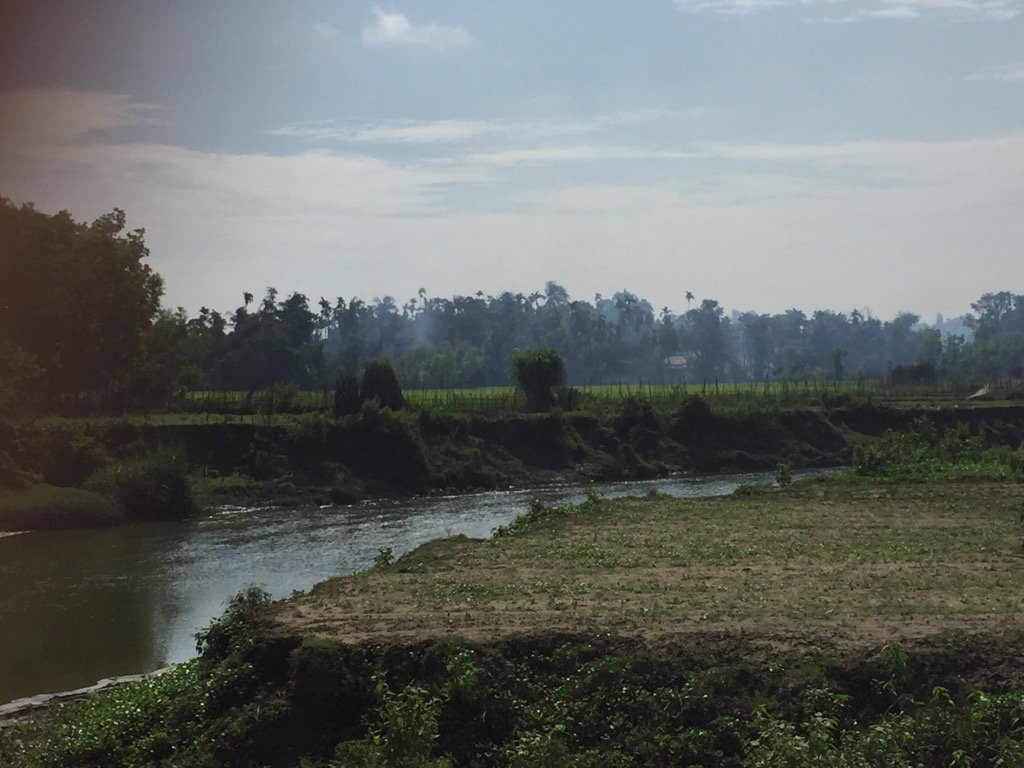
Still smoking. The village of Gawdu Zara, an hour after it was set alight by Rakhine youths.: image via Jonathan Head @pakhead, 7 September 2017
Massive destruction in Al Le Than Kyaw south of Maungdaw. Entire town burned, still smoking. Big smoke columns and gunfire to the north.: tweet via Jonathan Head @pakhead, 6 September 2017
Have been shown photos of men in jihadi gear burning Muslim homes in
Maungdaw - but they look staged, posing. Escorted everywhere by cops.:
tweet via Jonathan Head @pakhead, 6 September 2017
Maungdaw is a ghost town. Heavy security everywhere, plenty of burned
houses even in town. Government tells us every house burned by ARSA.:
tweet via Jonathan Head @pakhead, 6 September 2017
Entire
swathes of N. Rakhine State have been depopulated. Empty villages, many
burned, crops and livestock abandoned. Burning continues.:
tweet via Jonathan Head @pakhead, 6 September 2017
Just saw a Muslim village set alight by Rakhine youths wth jugs of petrol and machetes. Huge inferno. S of Maungdaw wth big police presence.: tweet via Jonathan Head @pakhead, 7 September 2017

A Rohingya ethnic
minority woman cradles her child at a temporary makeshift camp after
crossing over from Myanmar into the Bangladesh side of the border, near
Cox's Bazar's Gundum area, Saturday, Sept. 2, 2017. U.N. spokesman
Stephane Dujarric told reporters at U.N. headquarters on Friday that
while many of the 270,000 Rohingyas who have fled violence in Rakhine
state in the past two weeks initially arrived in Bangladesh by land,
more are now making the journey by boat.: photo by Bernat Armangue/AFP, 2 September 2017

A Rohingya ethnic
minority woman cradles her child at a temporary makeshift camp after
crossing over from Myanmar into the Bangladesh side of the border, near
Cox's Bazar's Gundum area, Saturday, Sept. 2, 2017. U.N. spokesman
Stephane Dujarric told reporters at U.N. headquarters on Friday that
while many of the 270,000 Rohingyas who have fled violence in Rakhine
state in the past two weeks initially arrived in Bangladesh by land,
more are now making the journey by boat.: photo by Bernat Armangue/AFP, 2 September 2017


Jonah Fisher added
The man who is commanding operations in Rakhine State.


Jonah Fisher added
The man who is commanding operations in Rakhine State.
image via Jonah Fisher @JonahFisherBBC, 11 September 2017
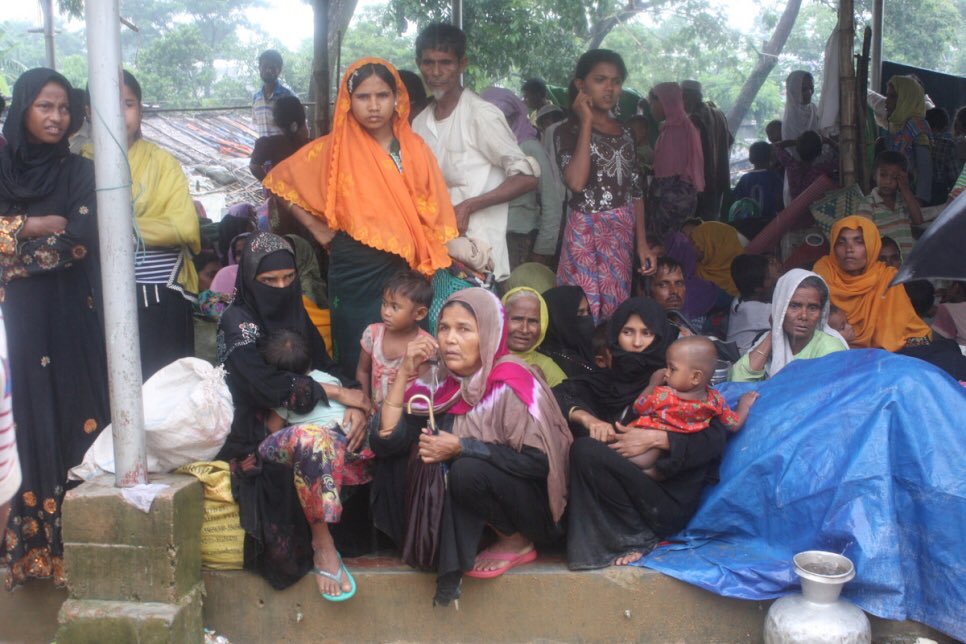


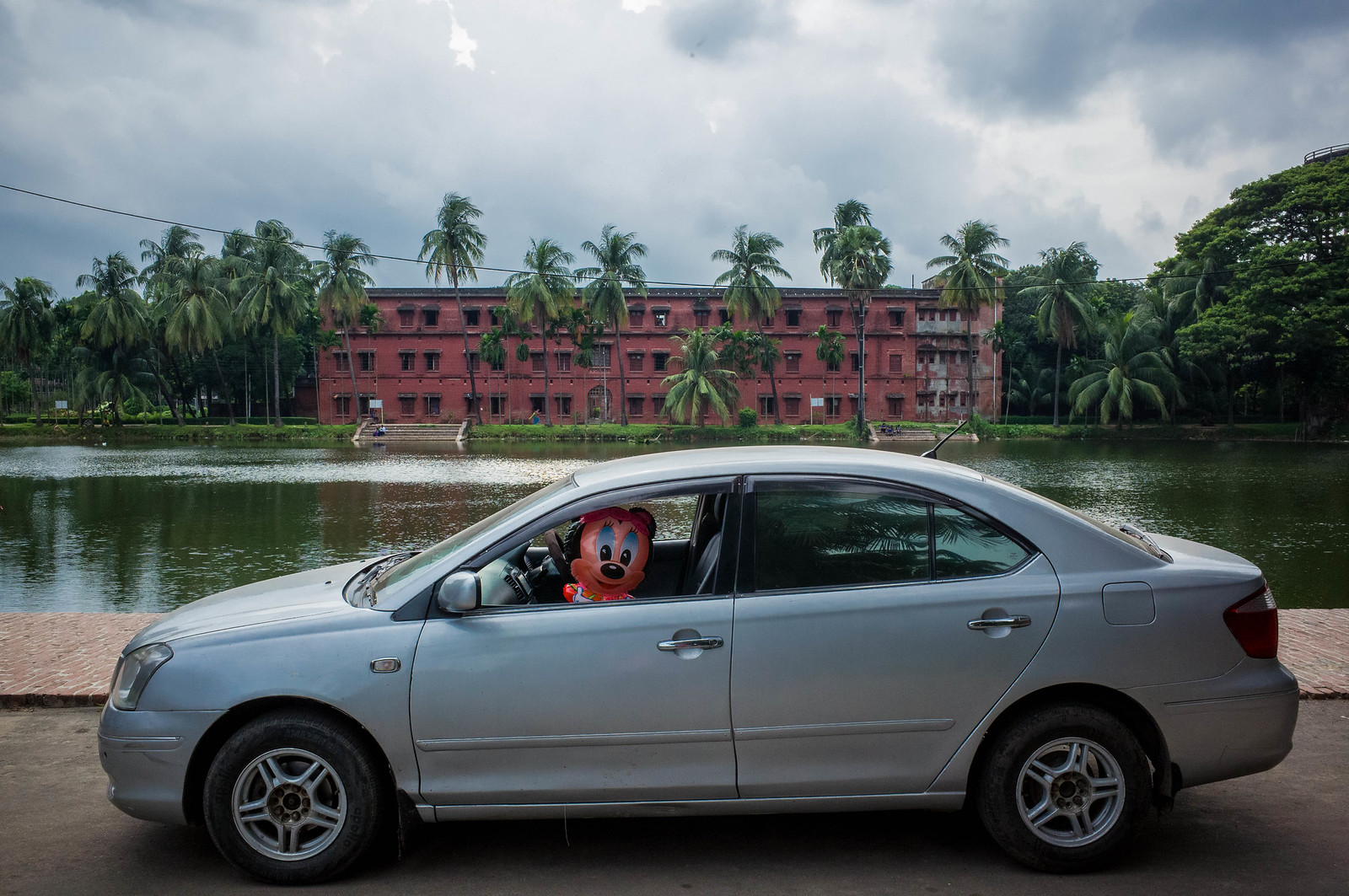
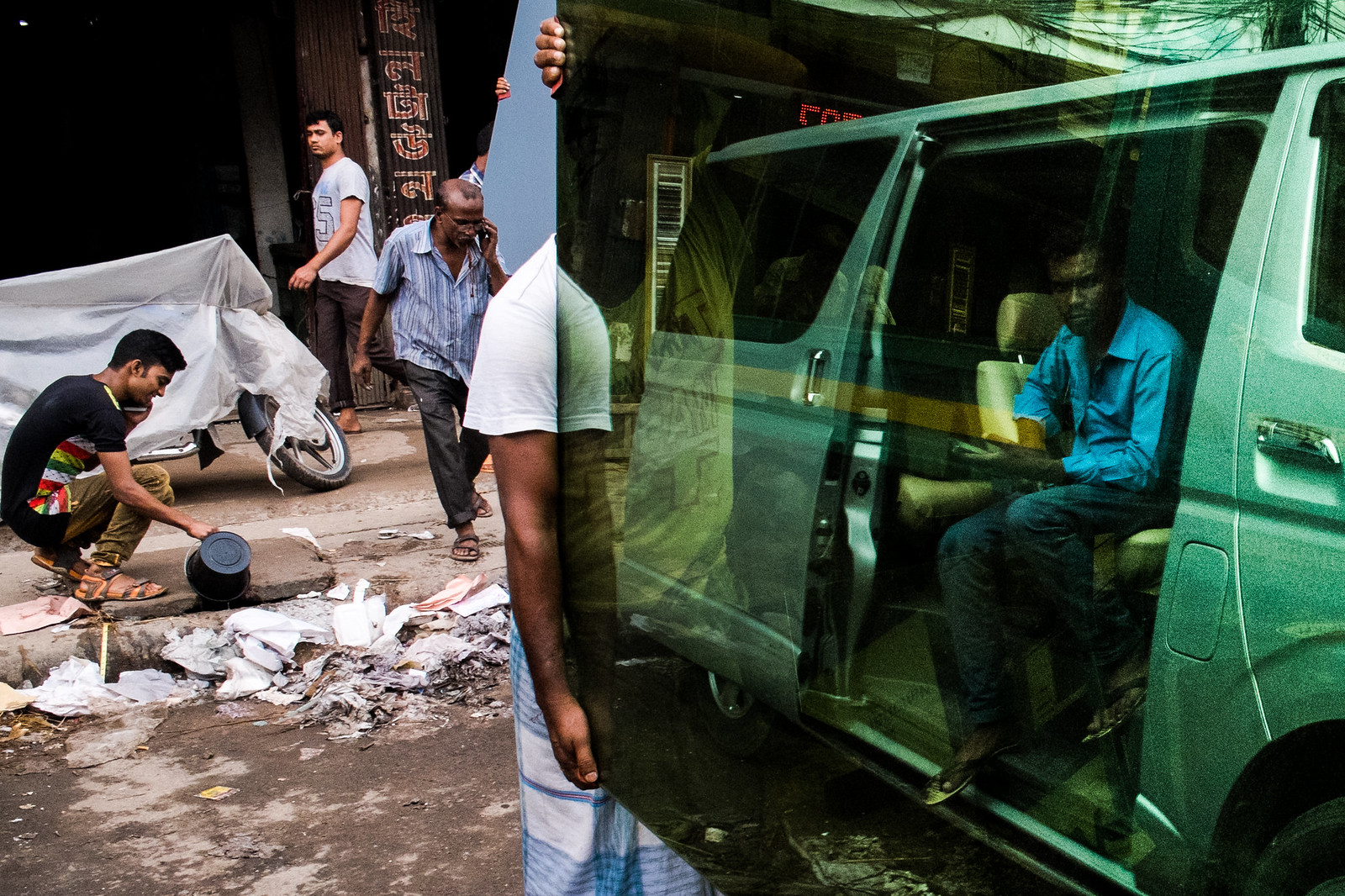
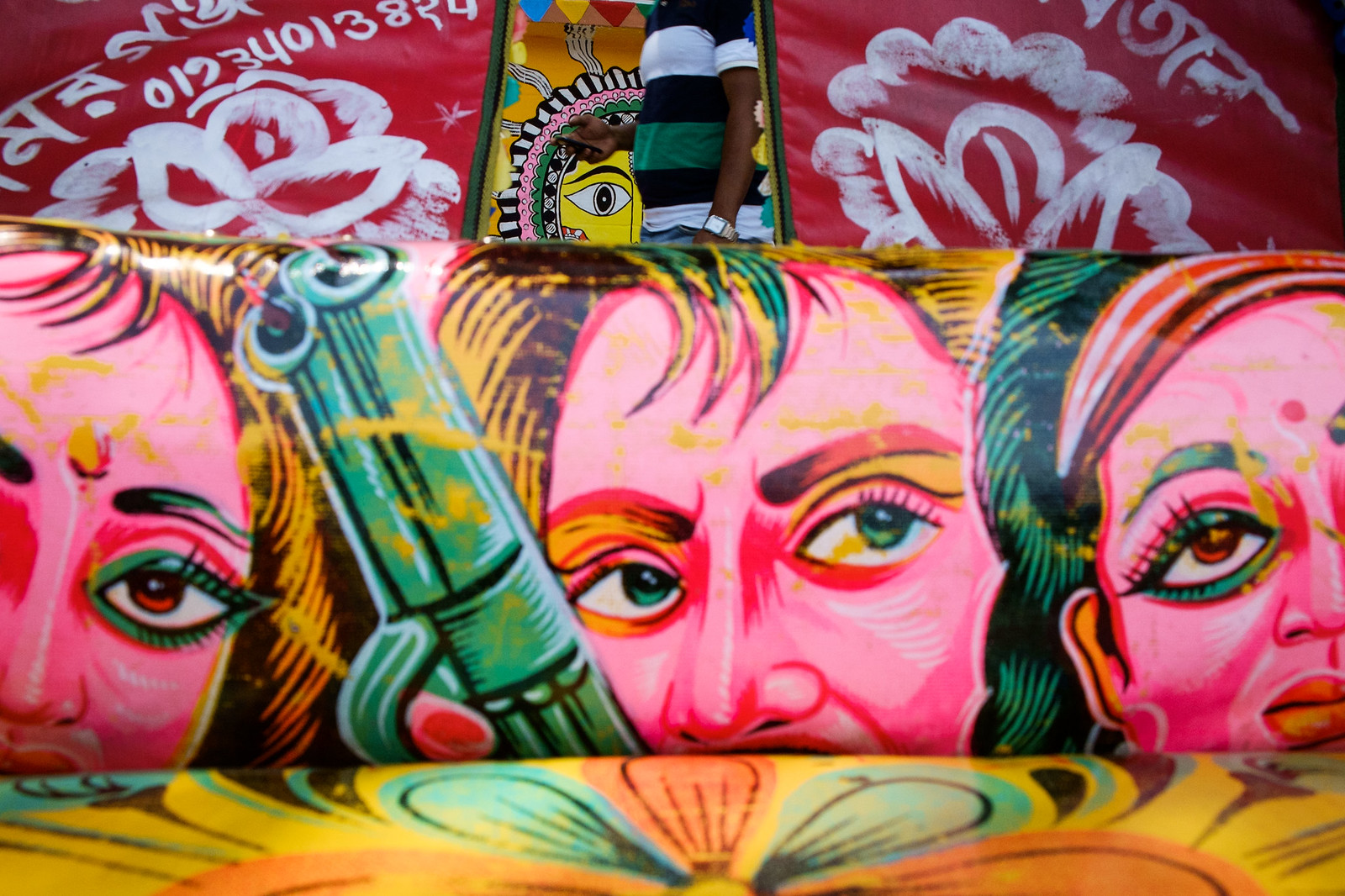
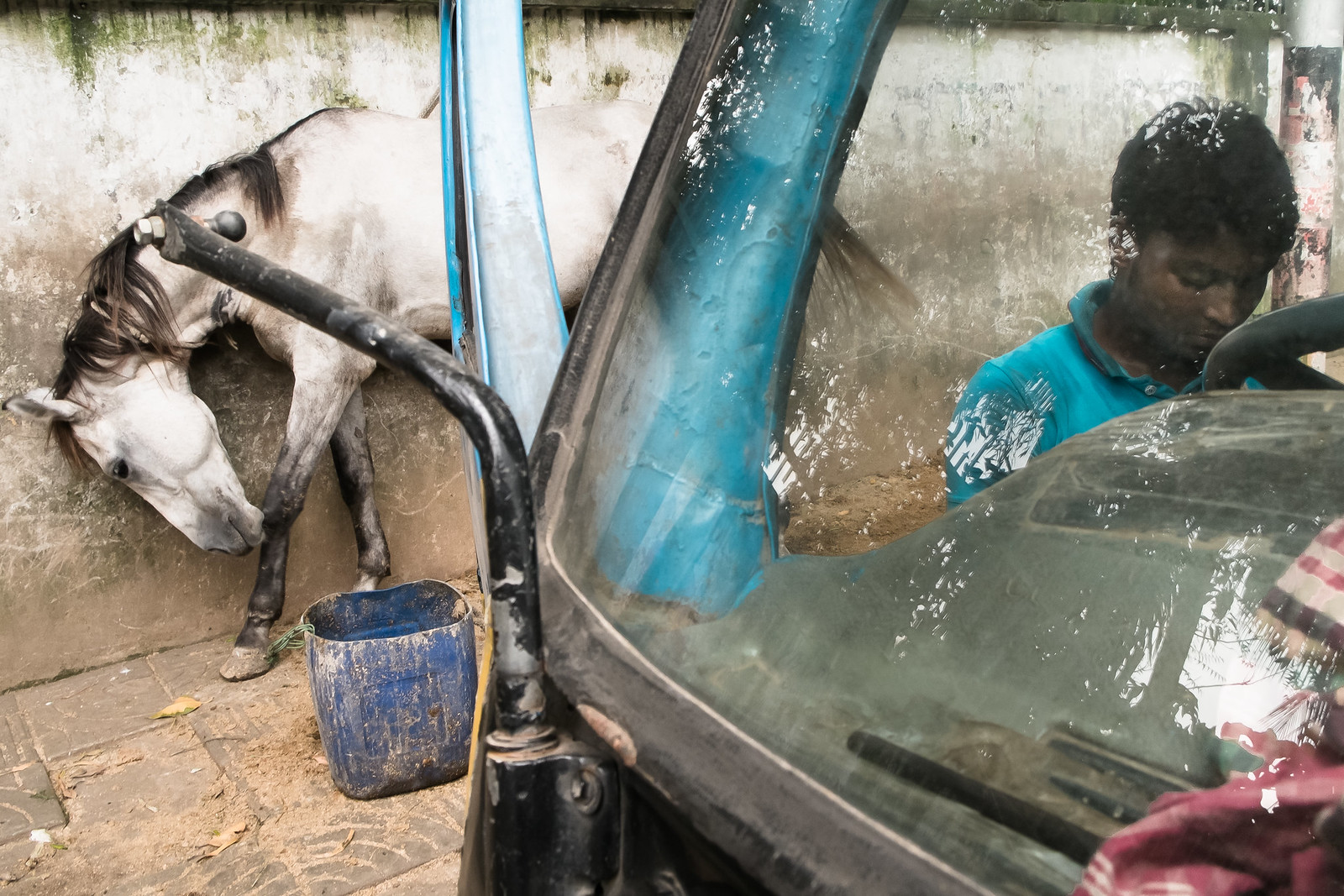
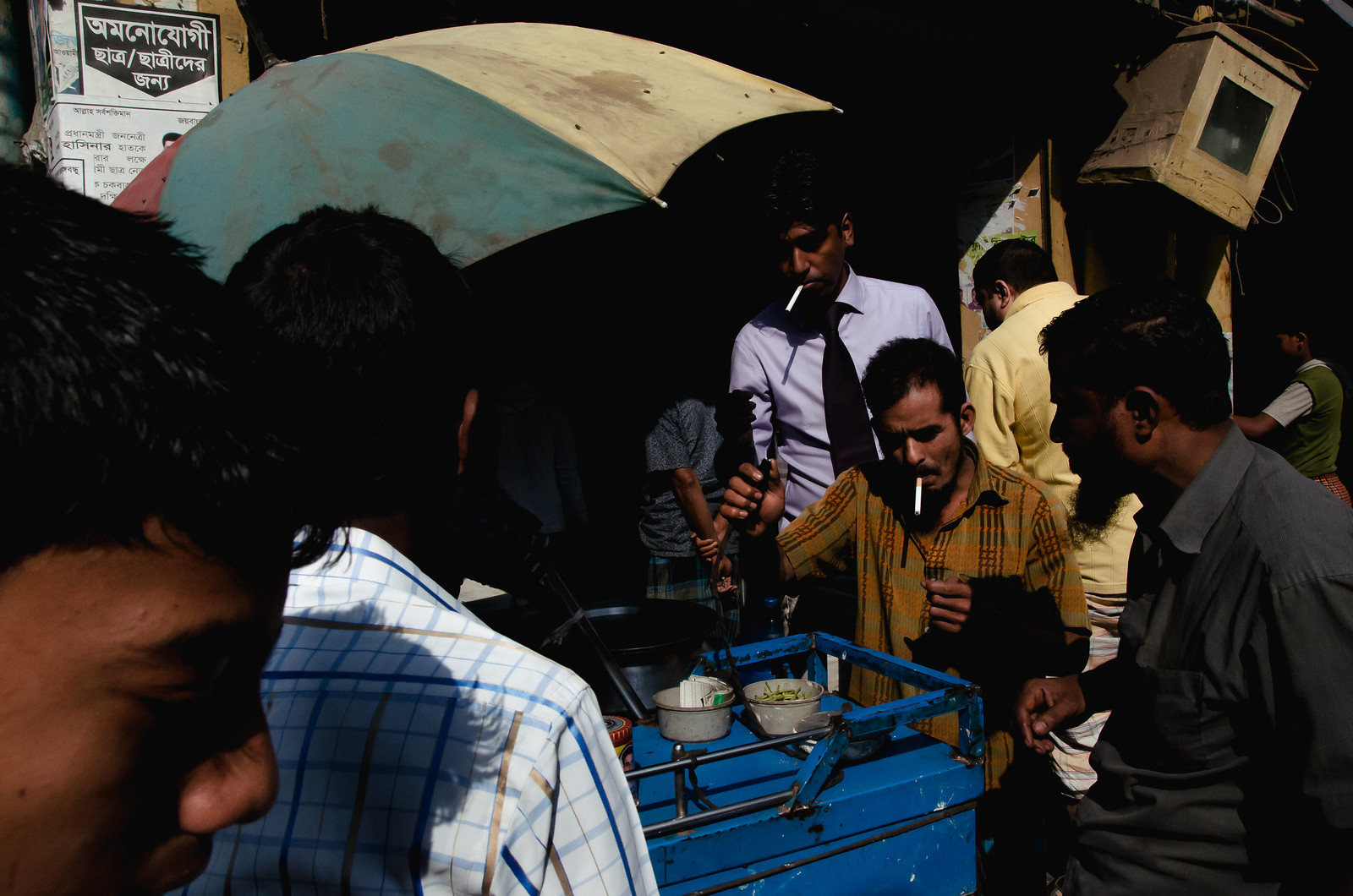
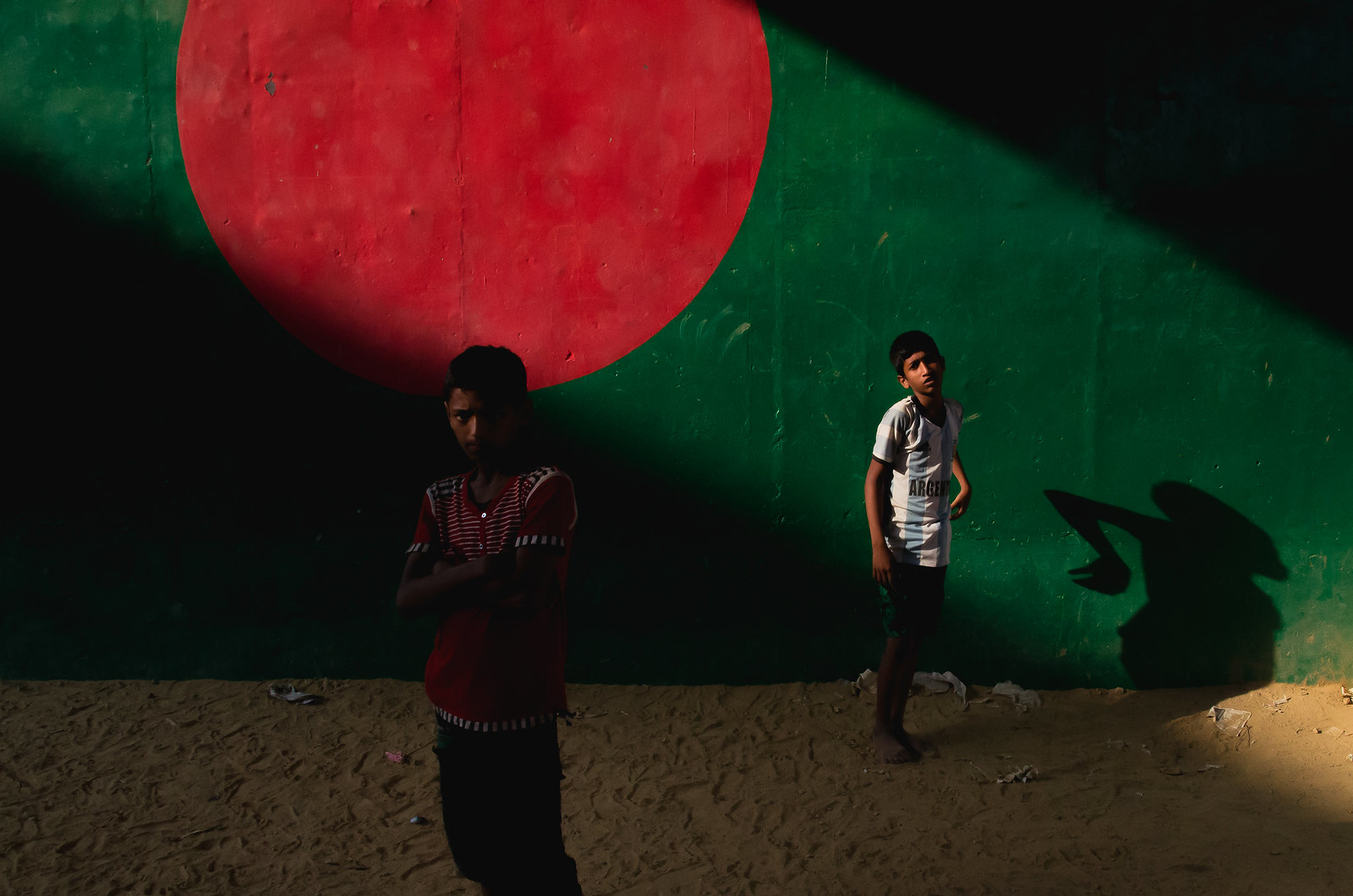
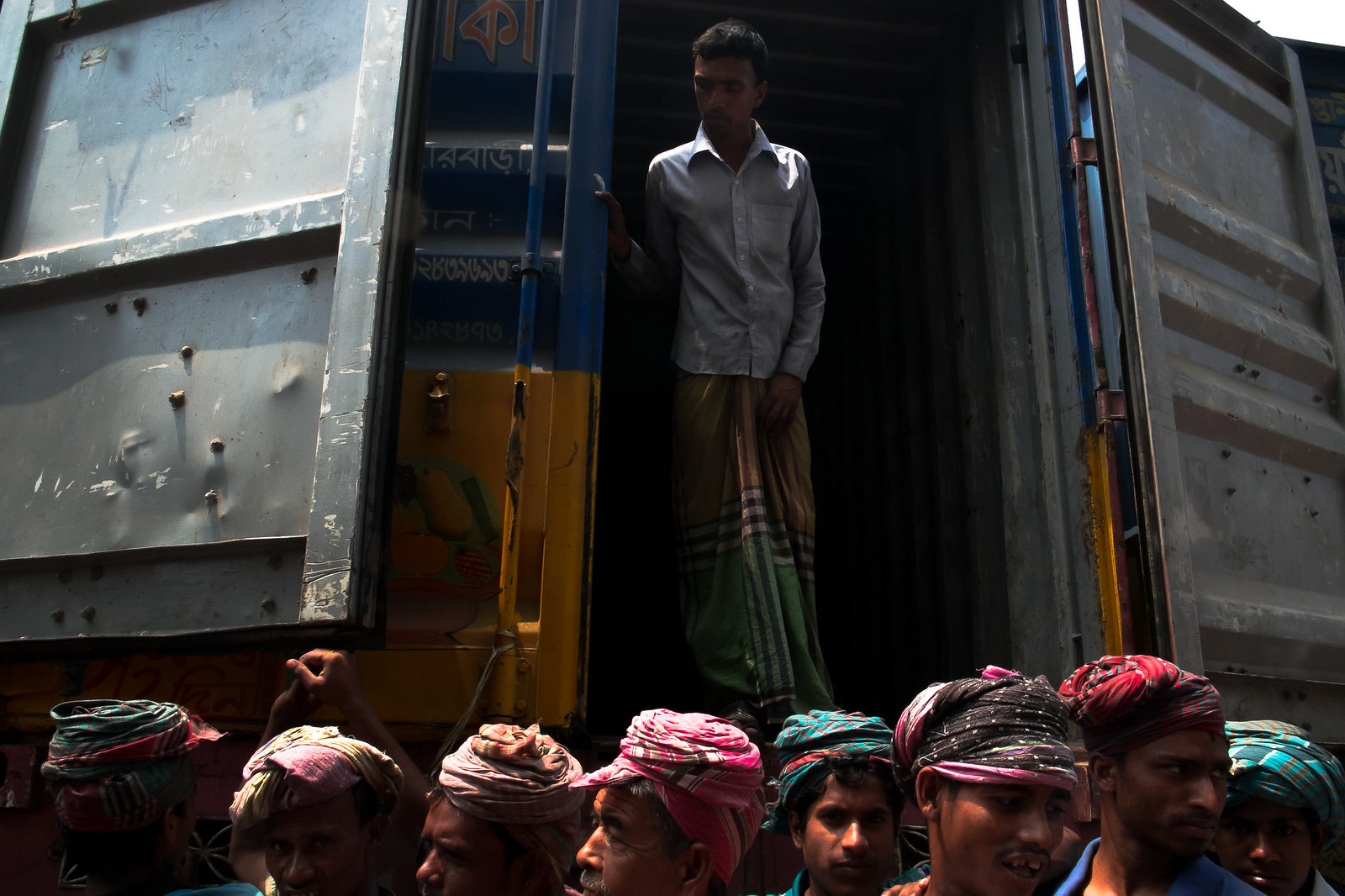
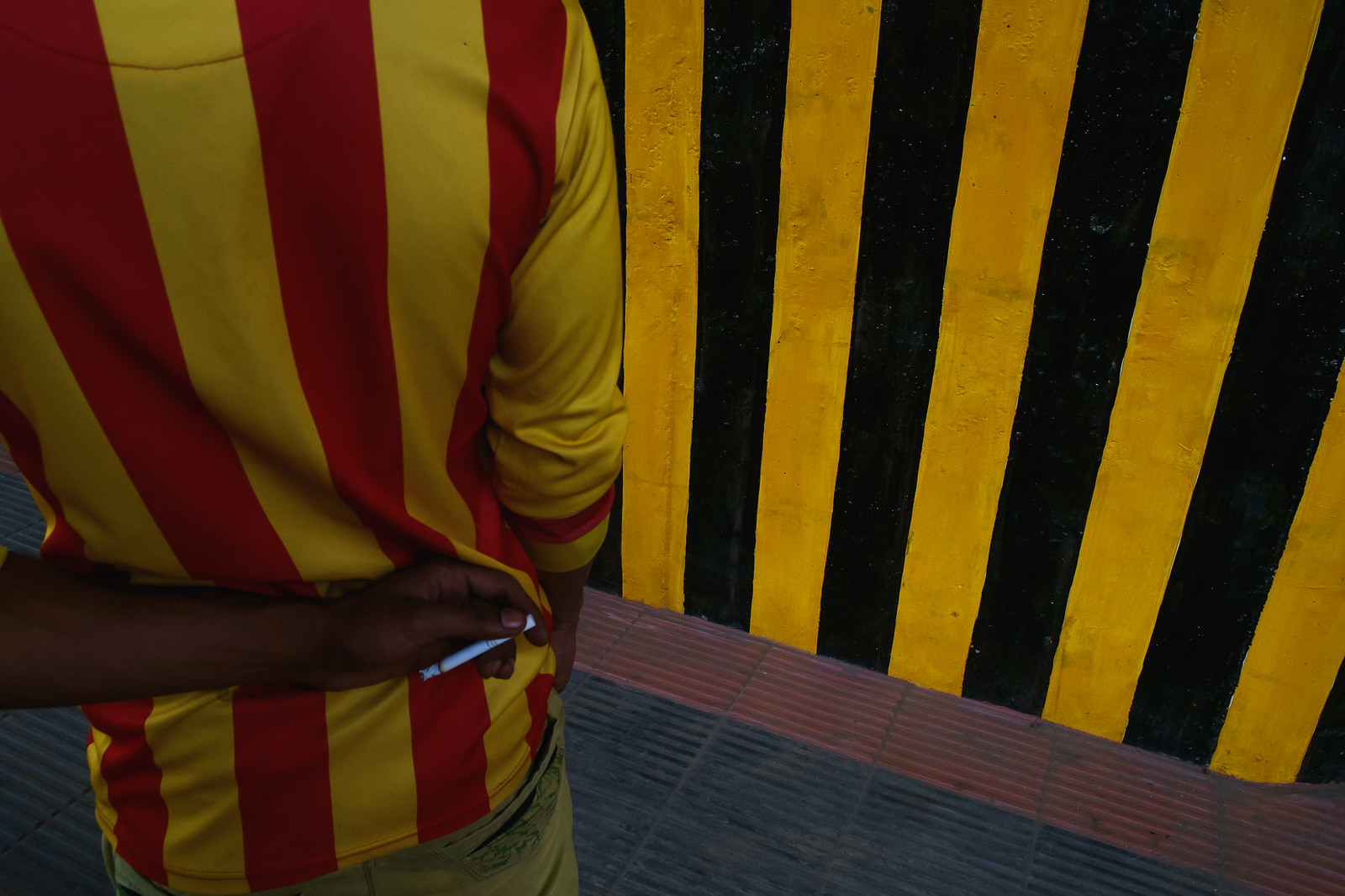
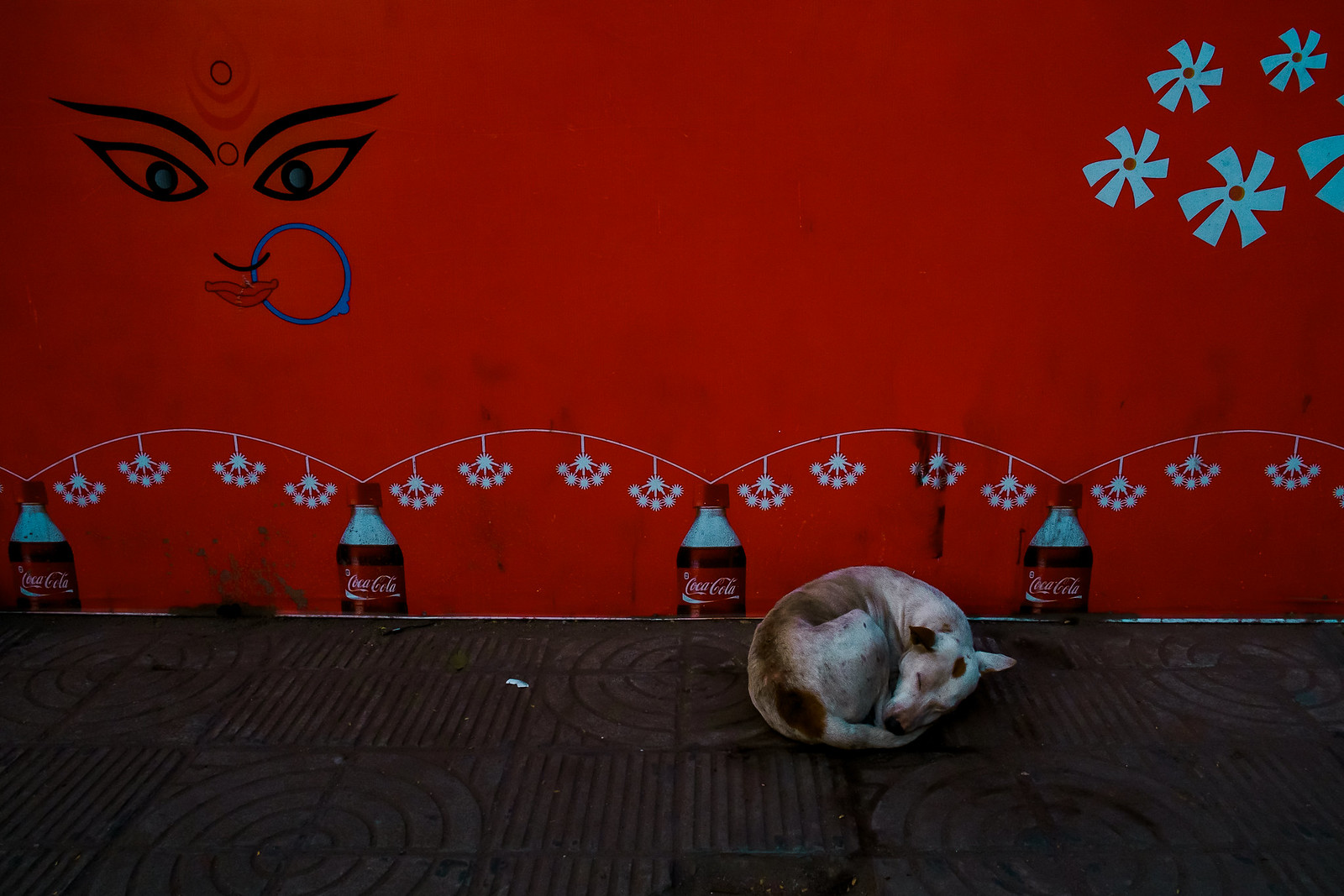
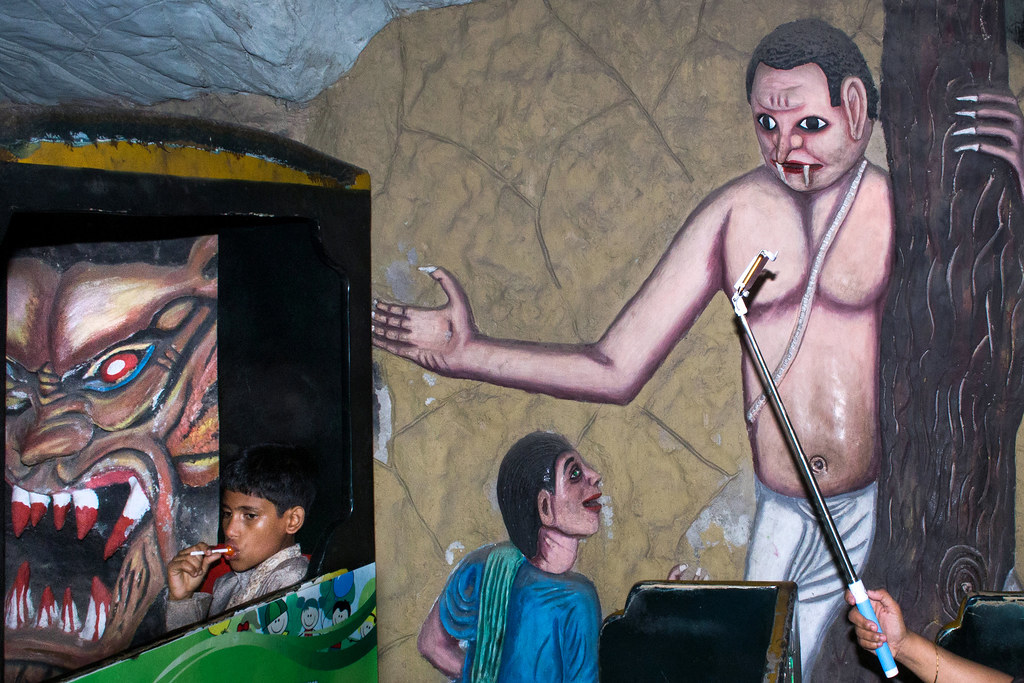
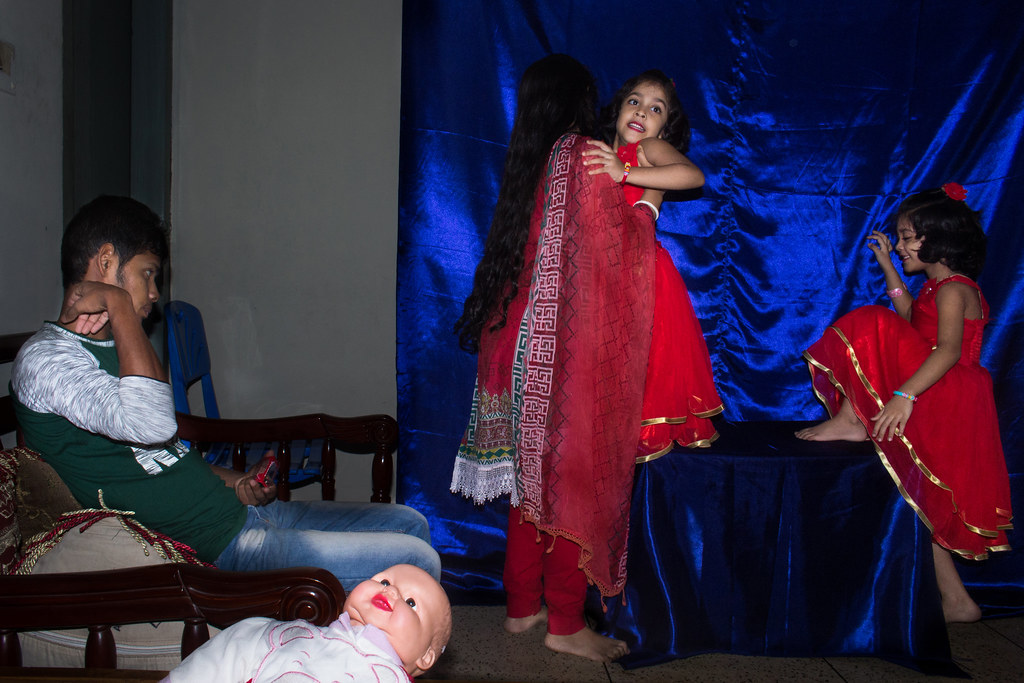
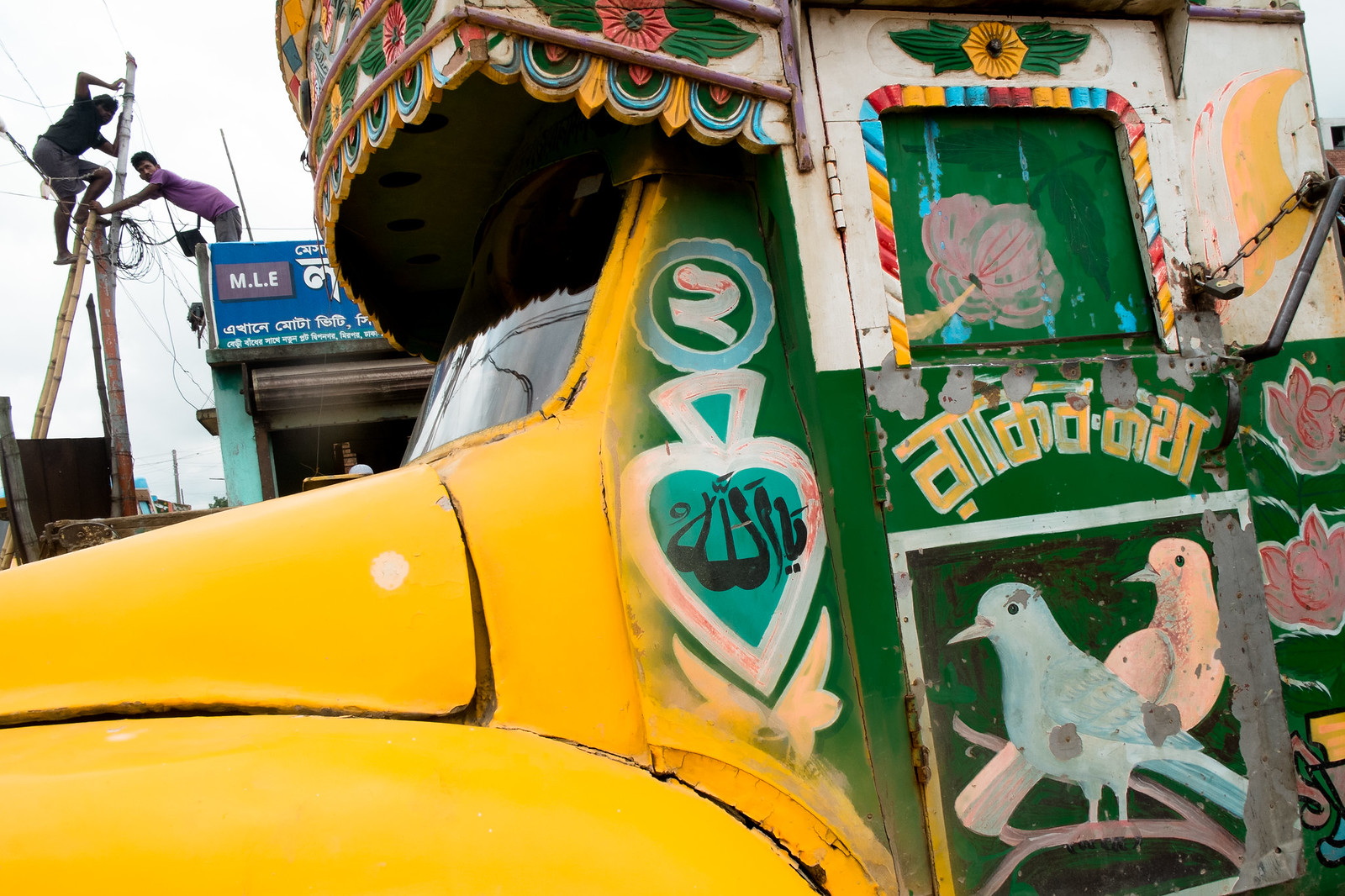
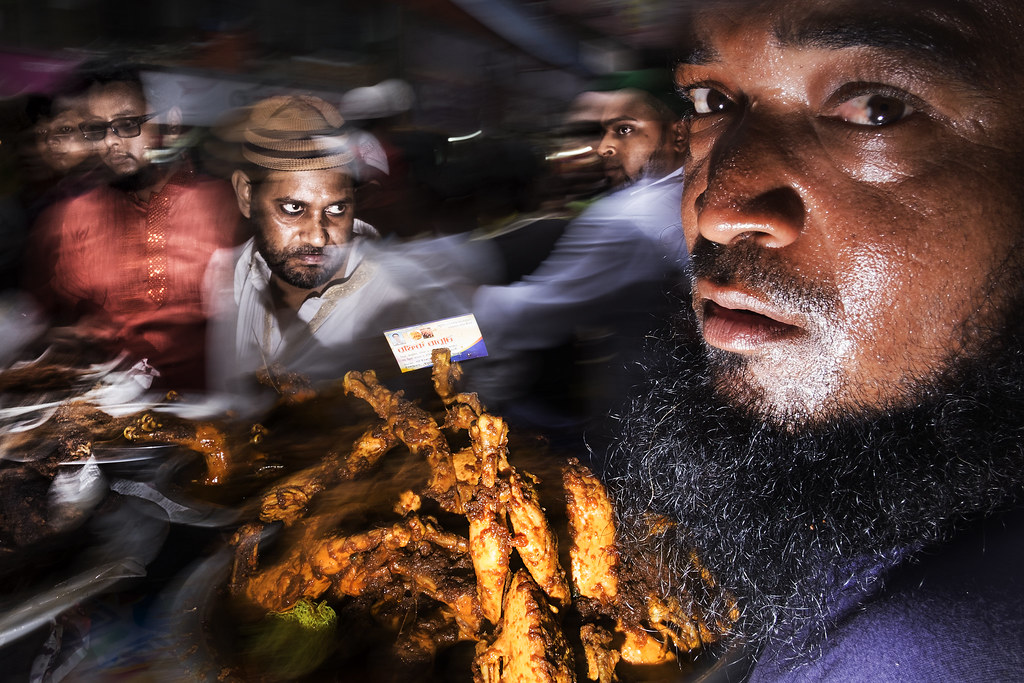
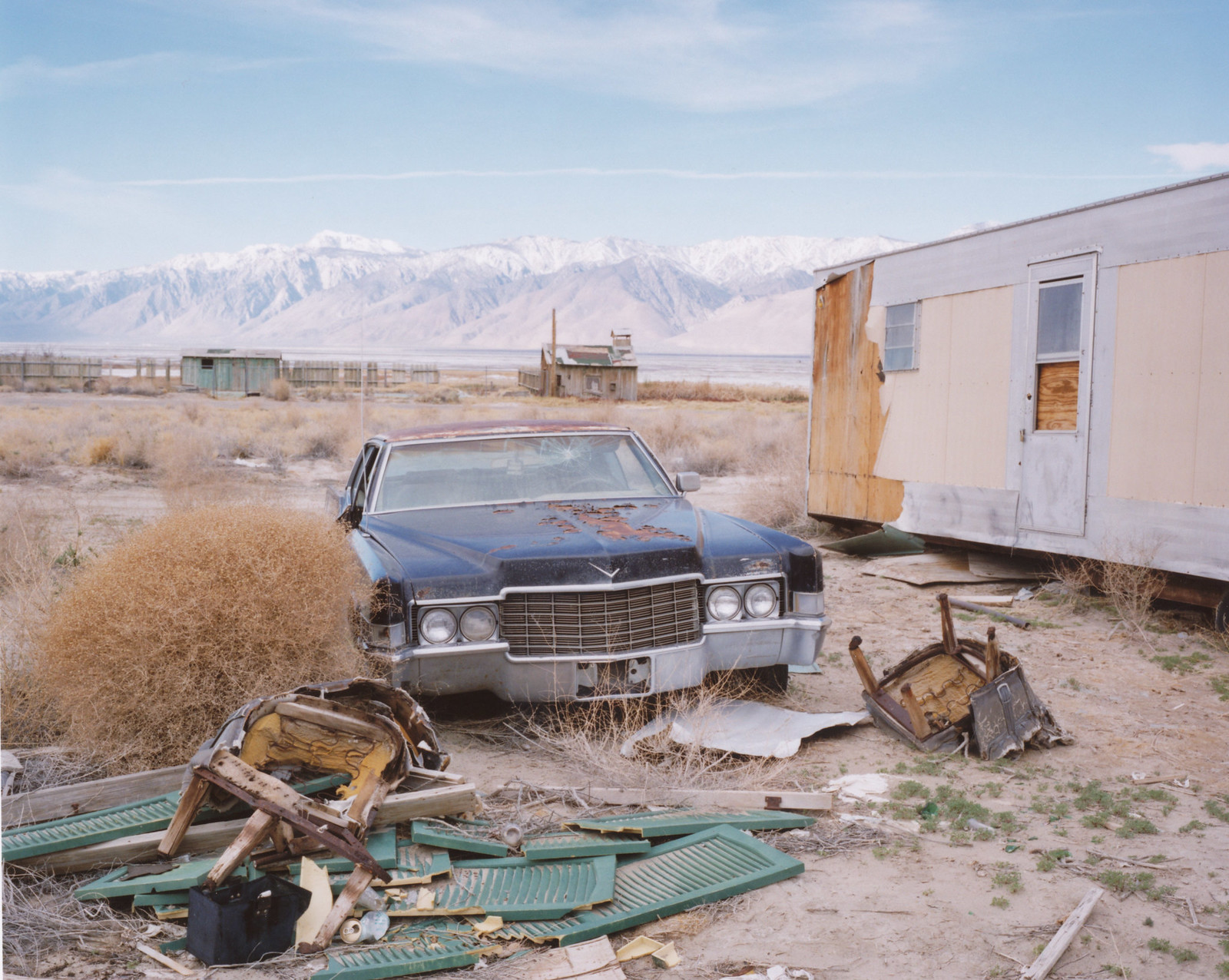
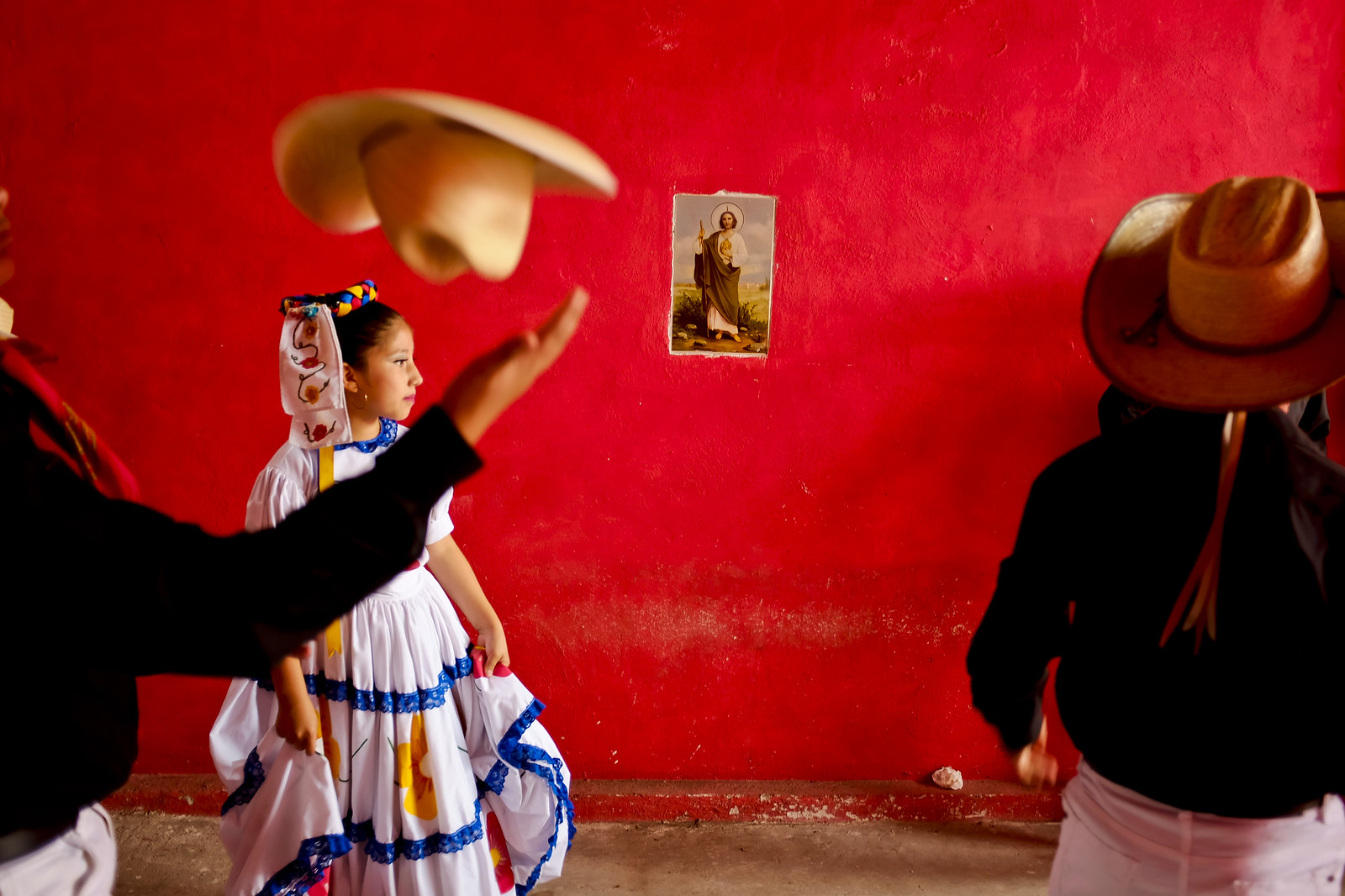
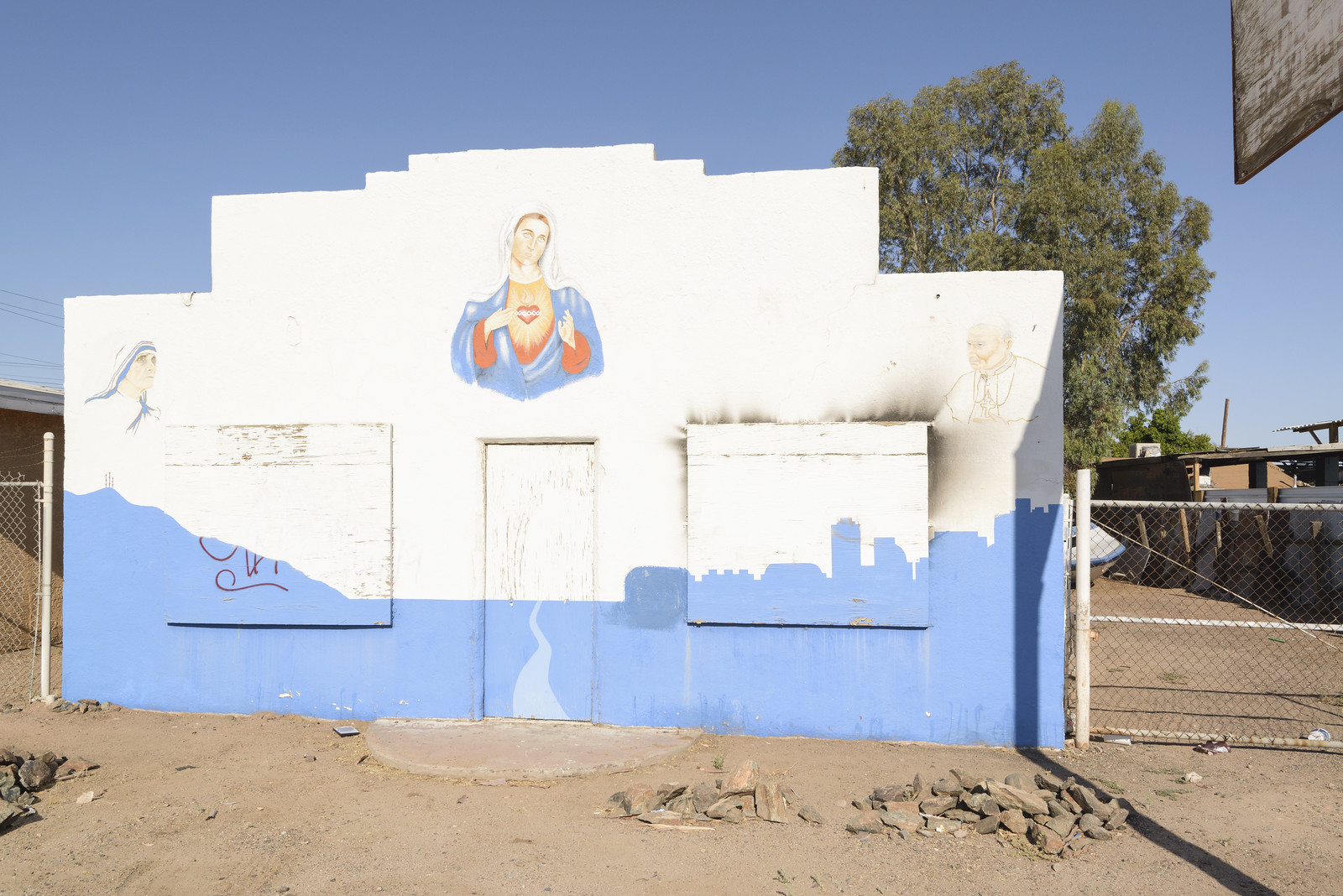
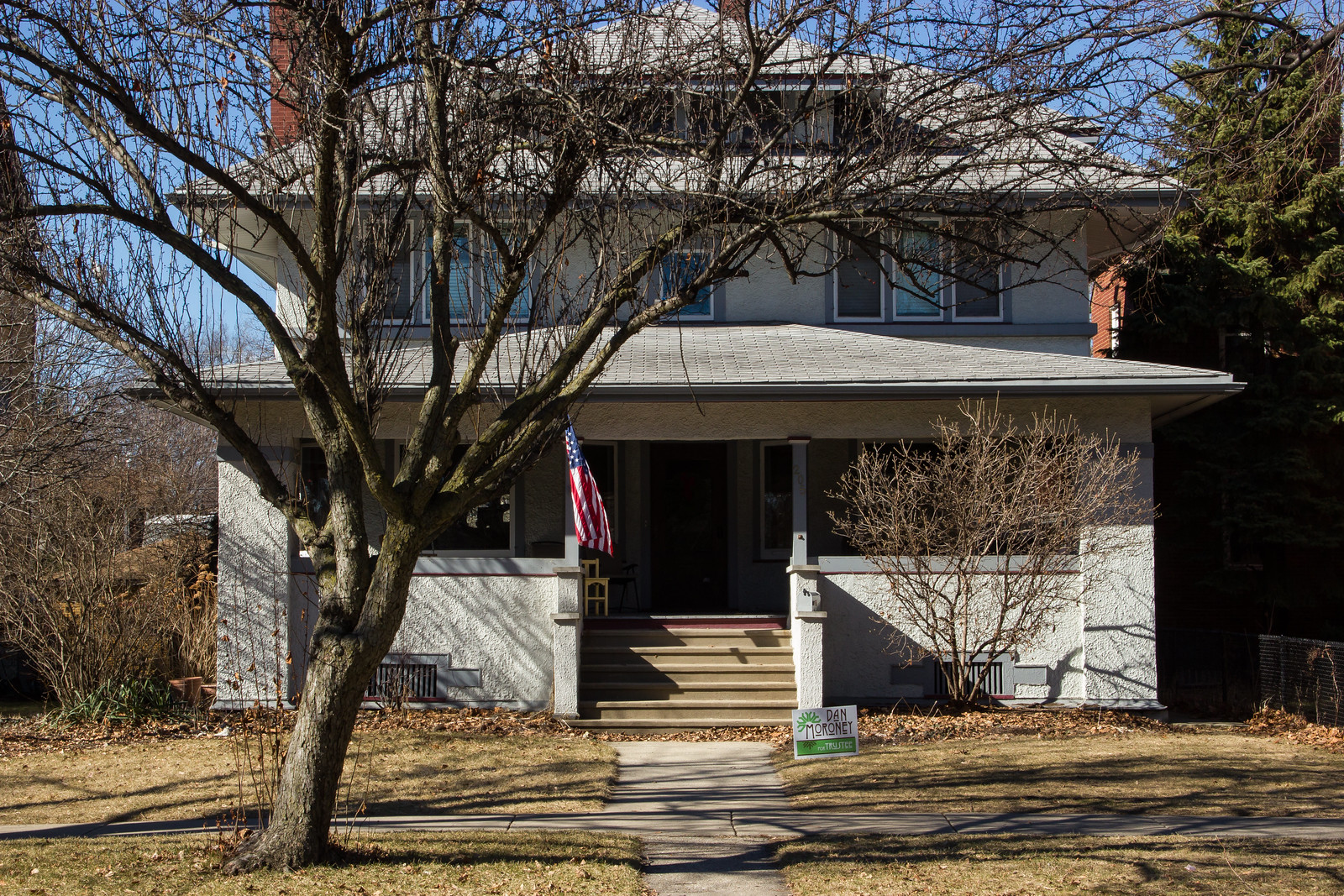
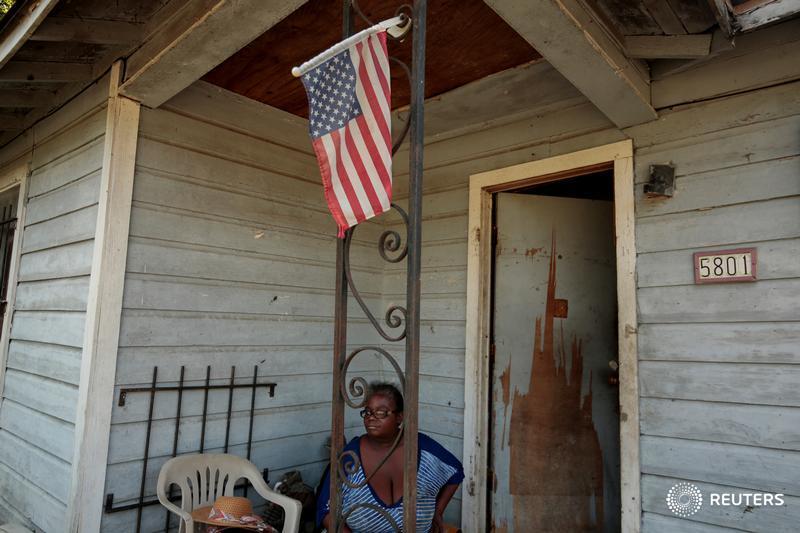
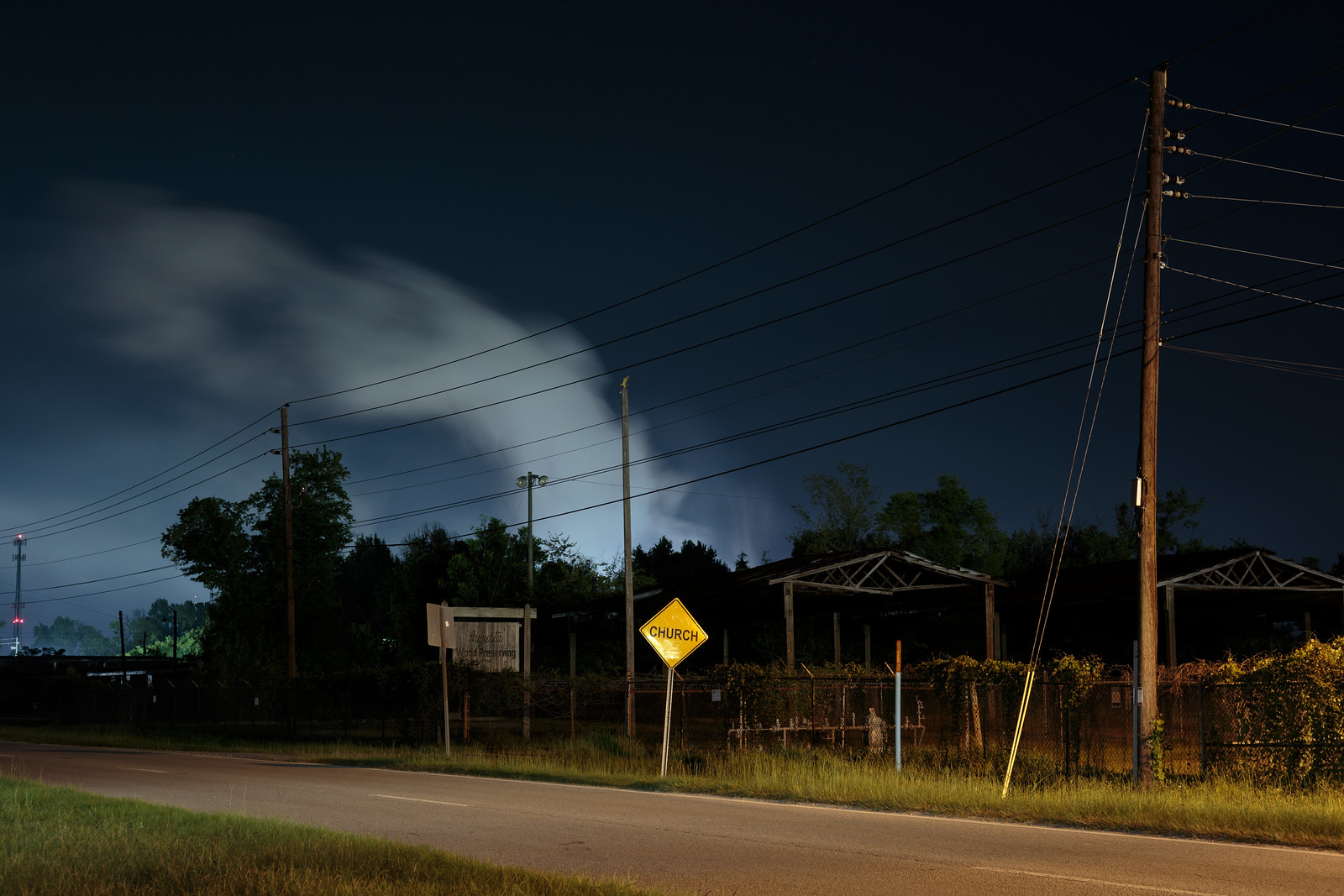
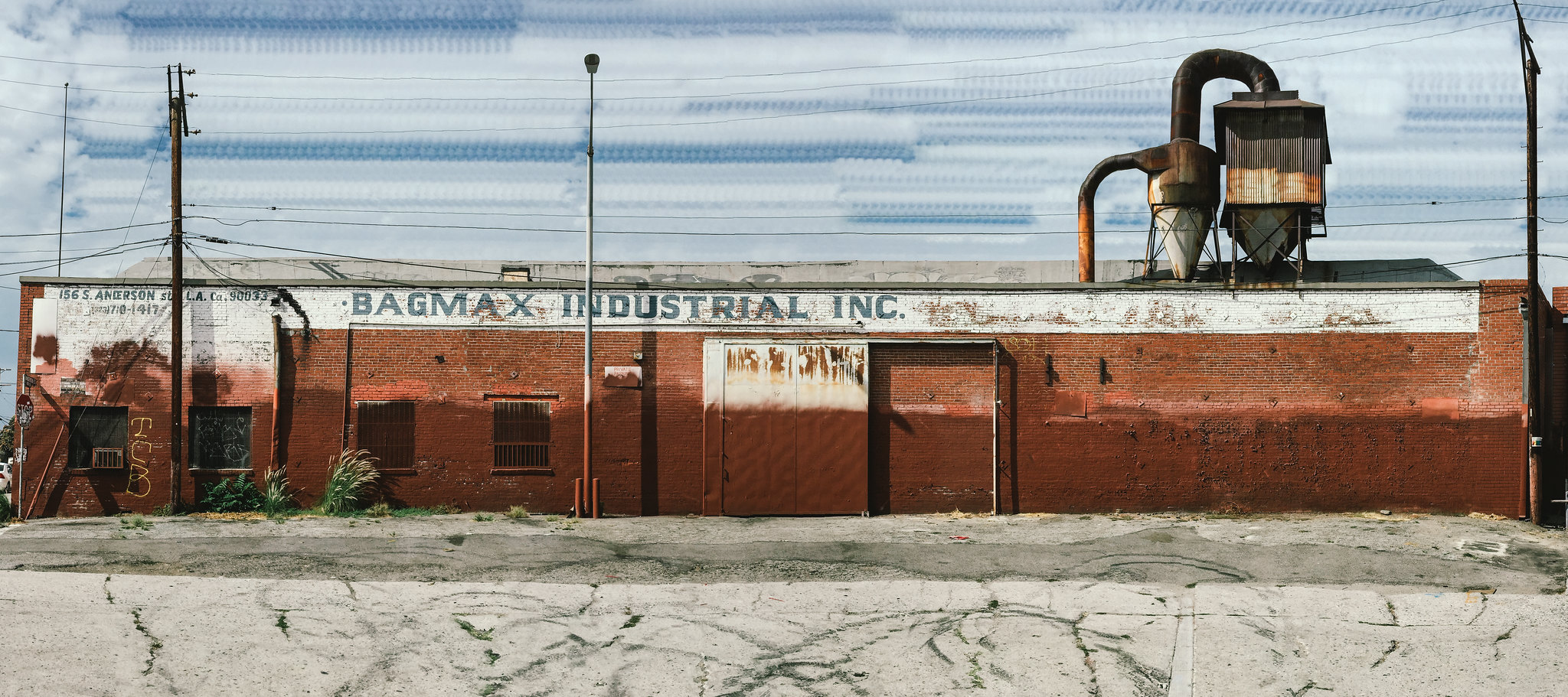
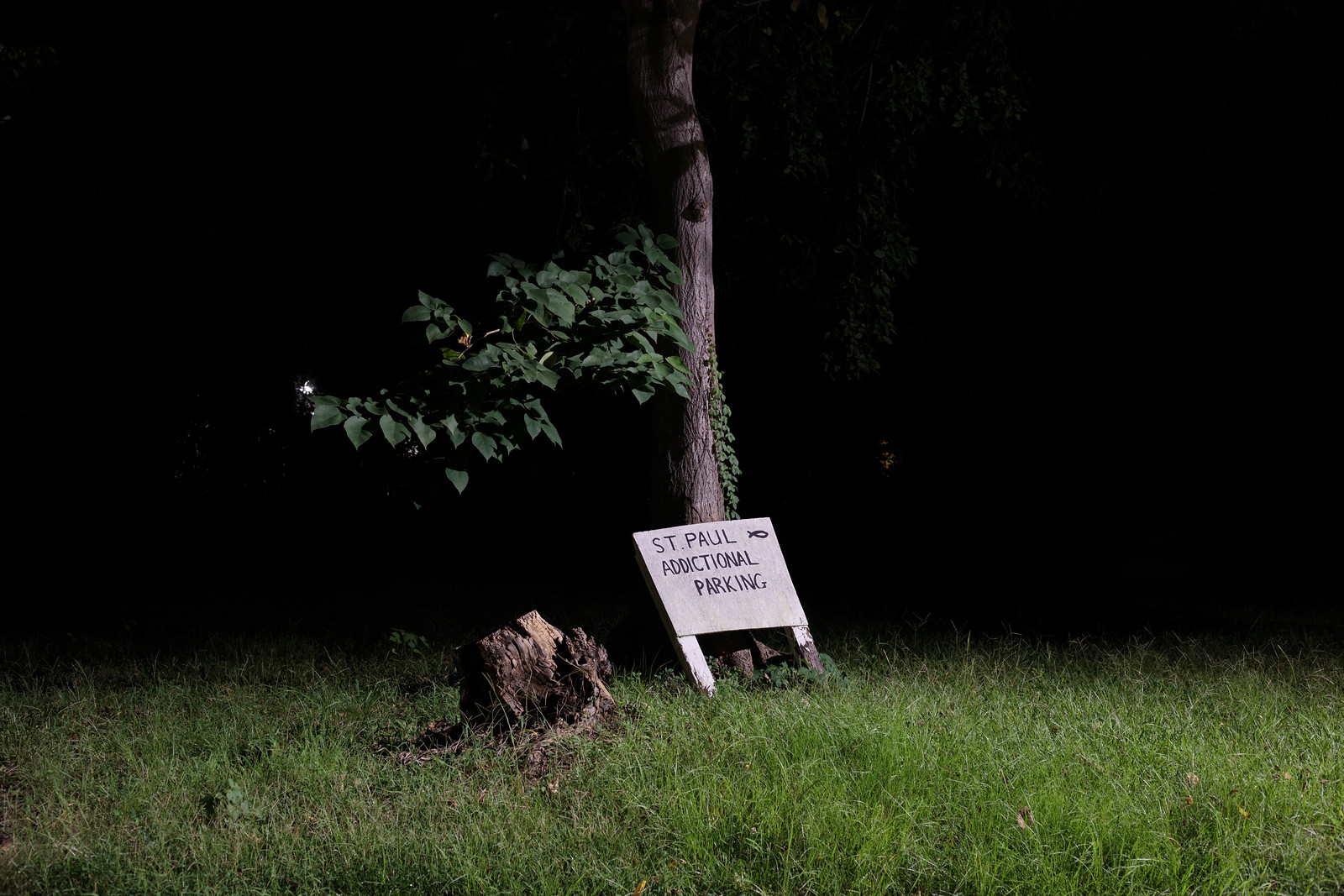
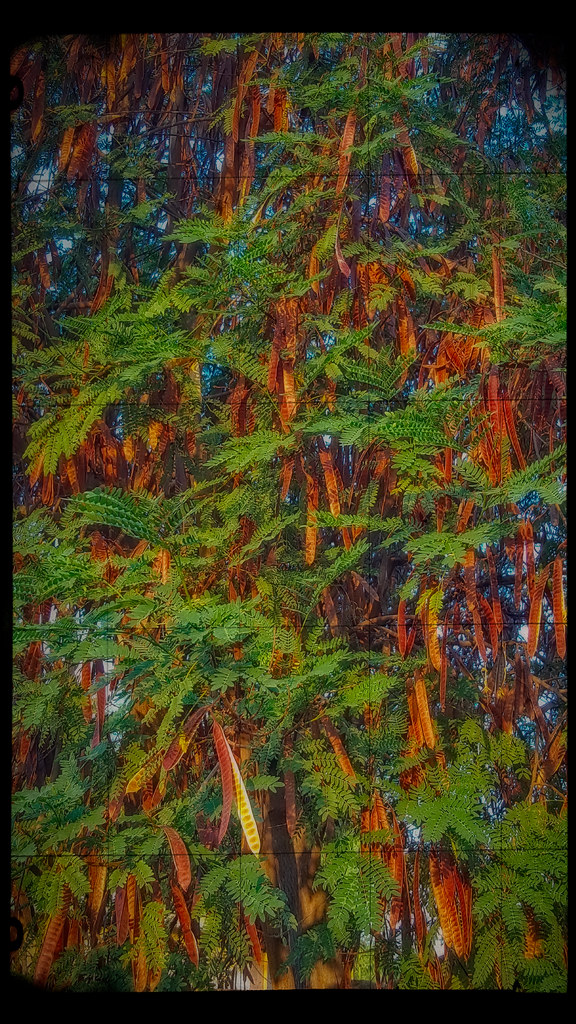
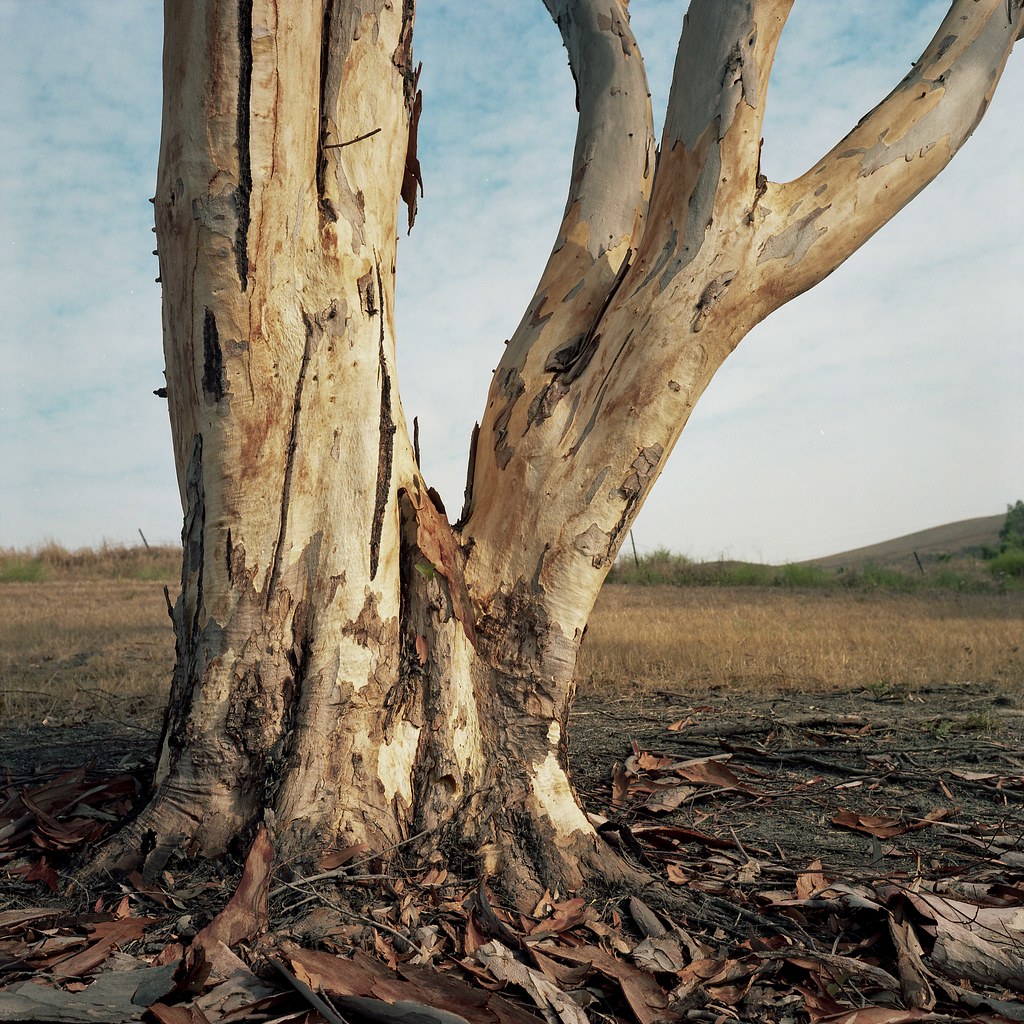

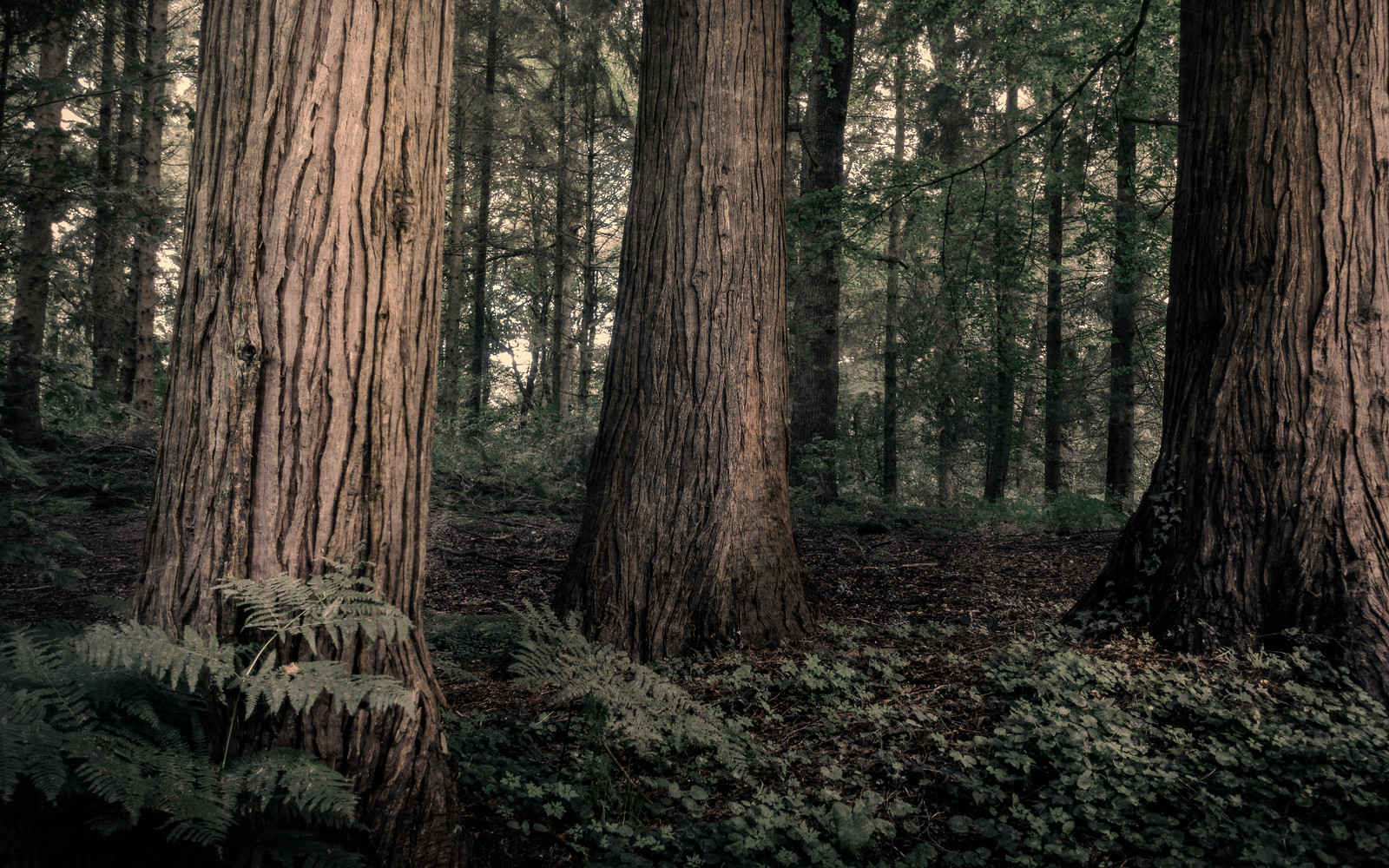
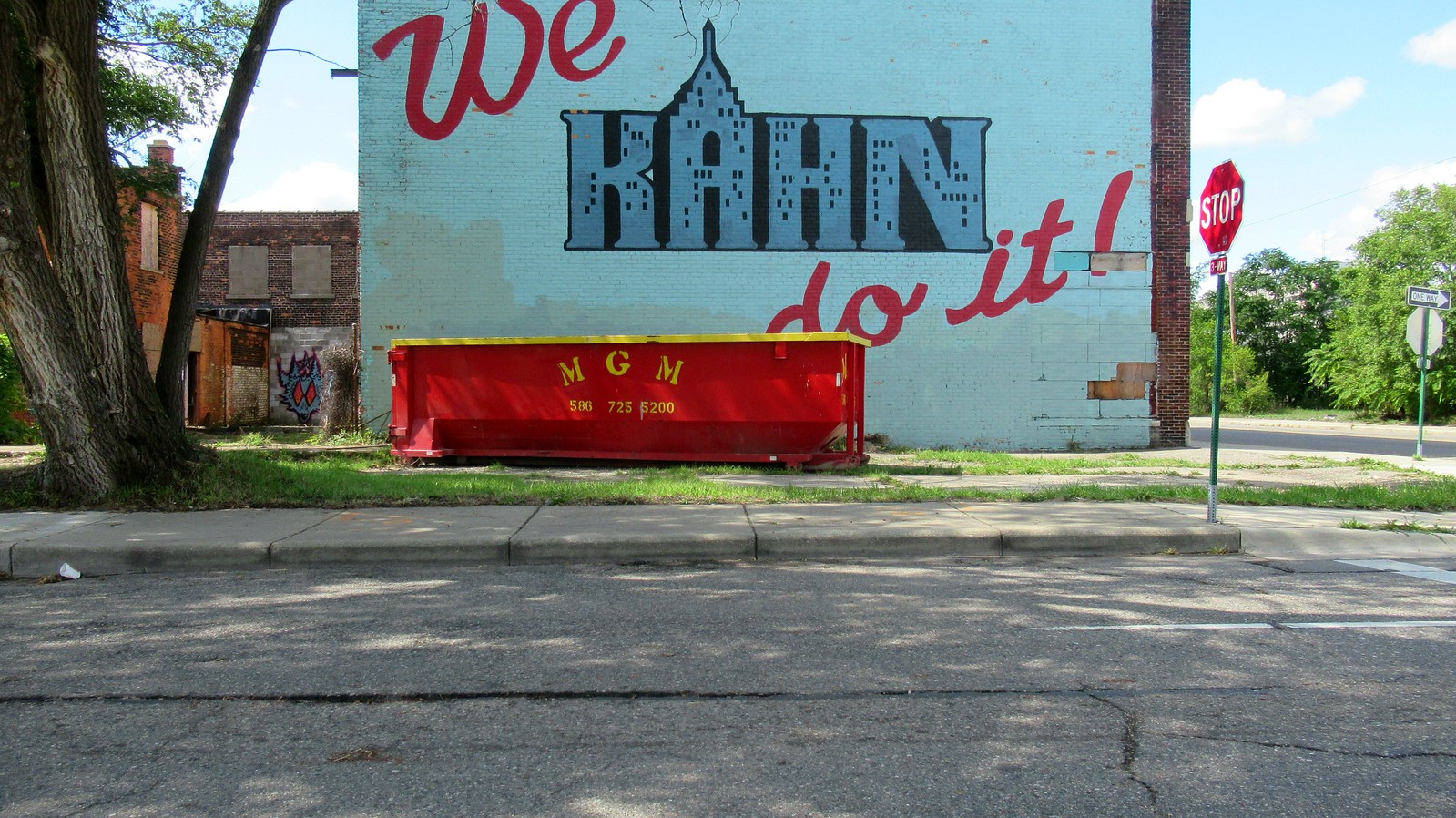
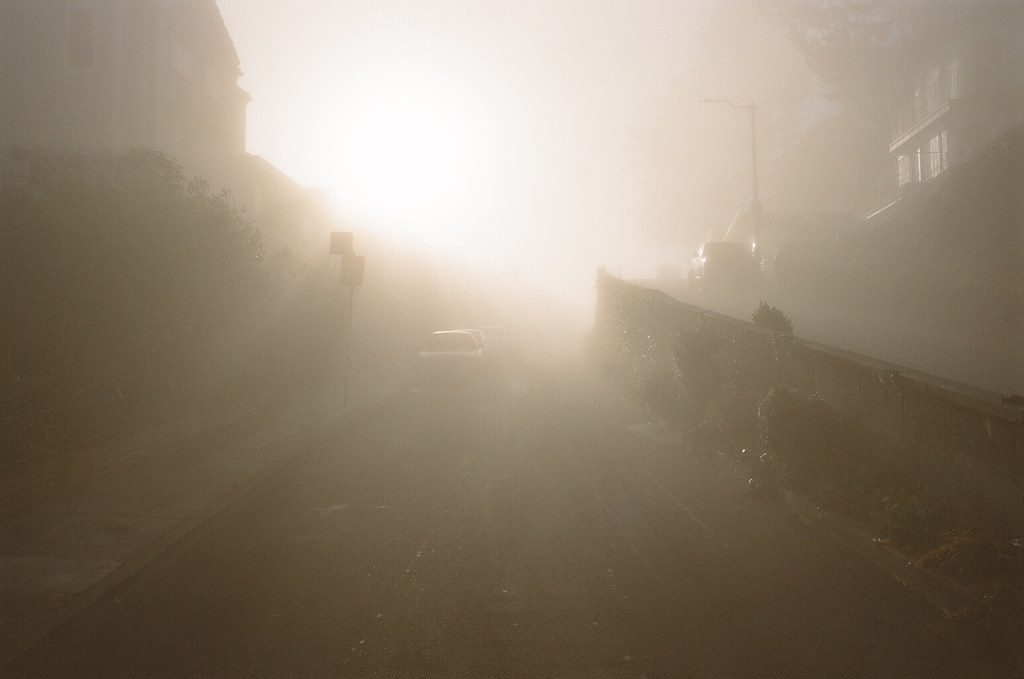
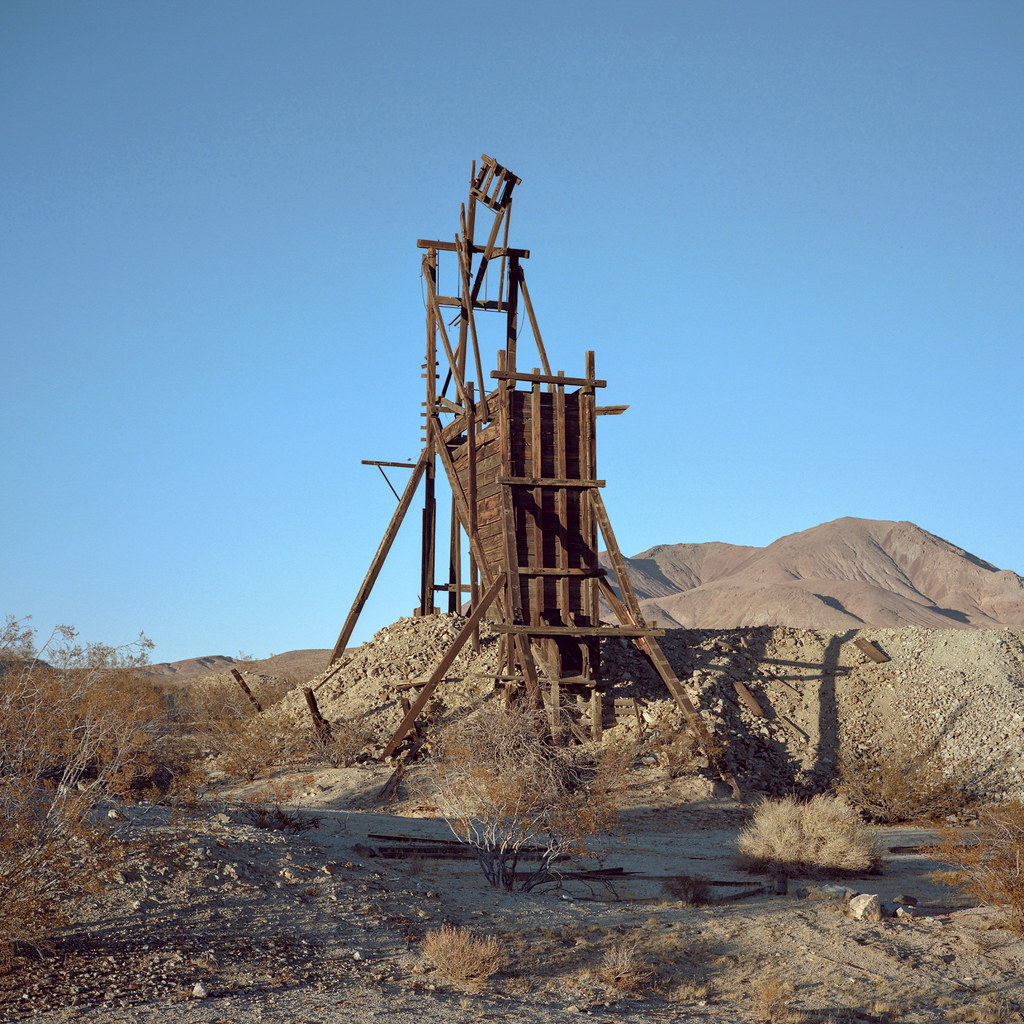
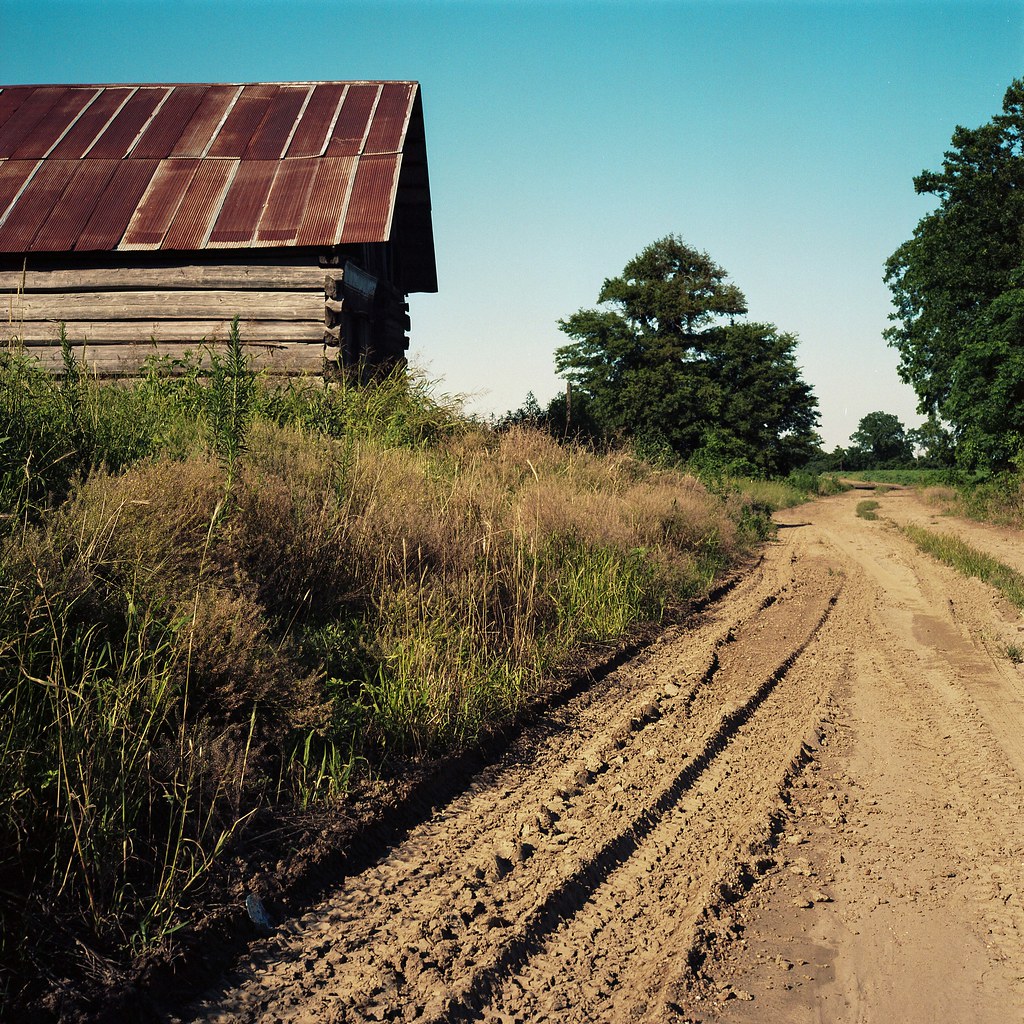
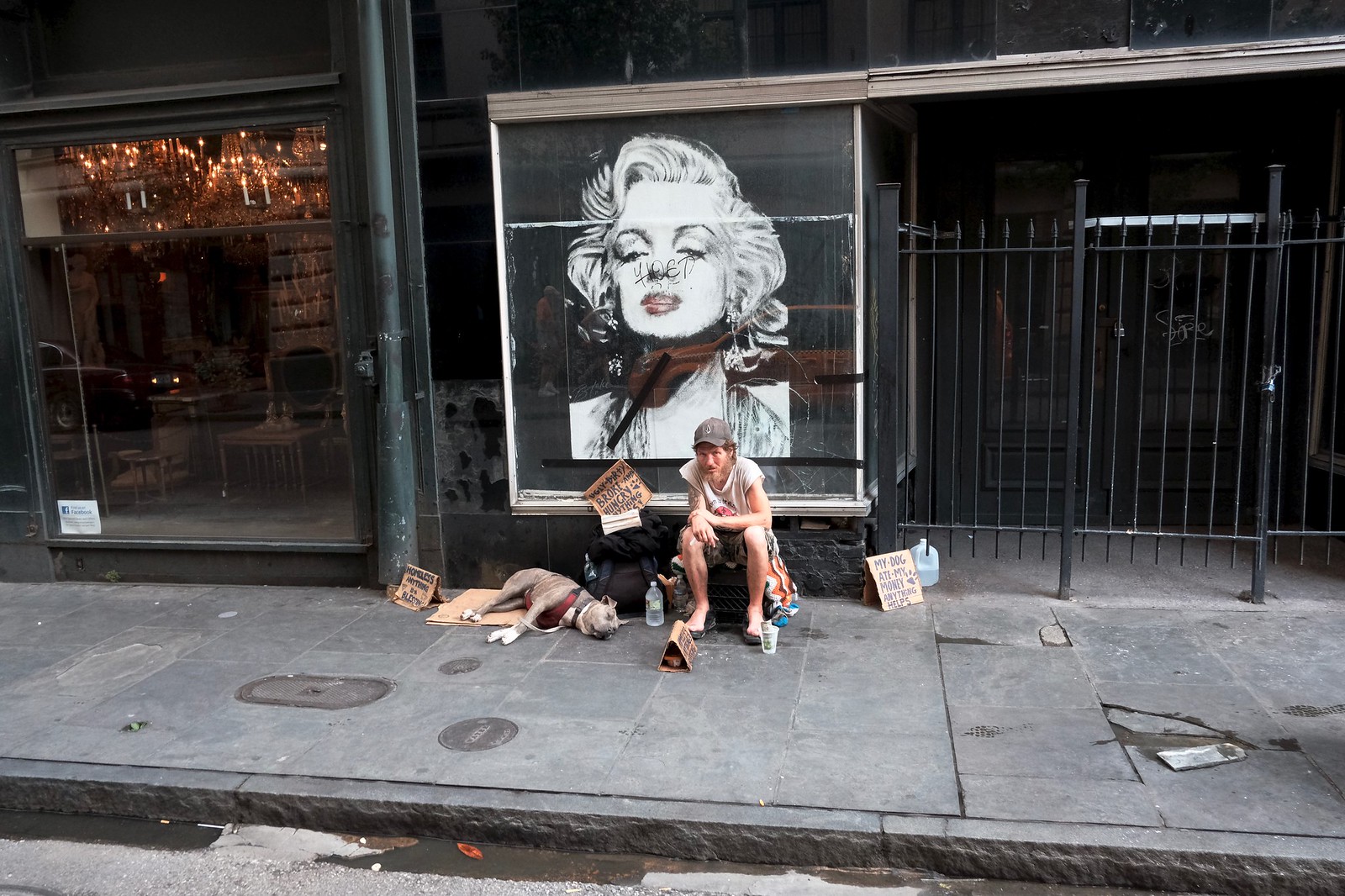
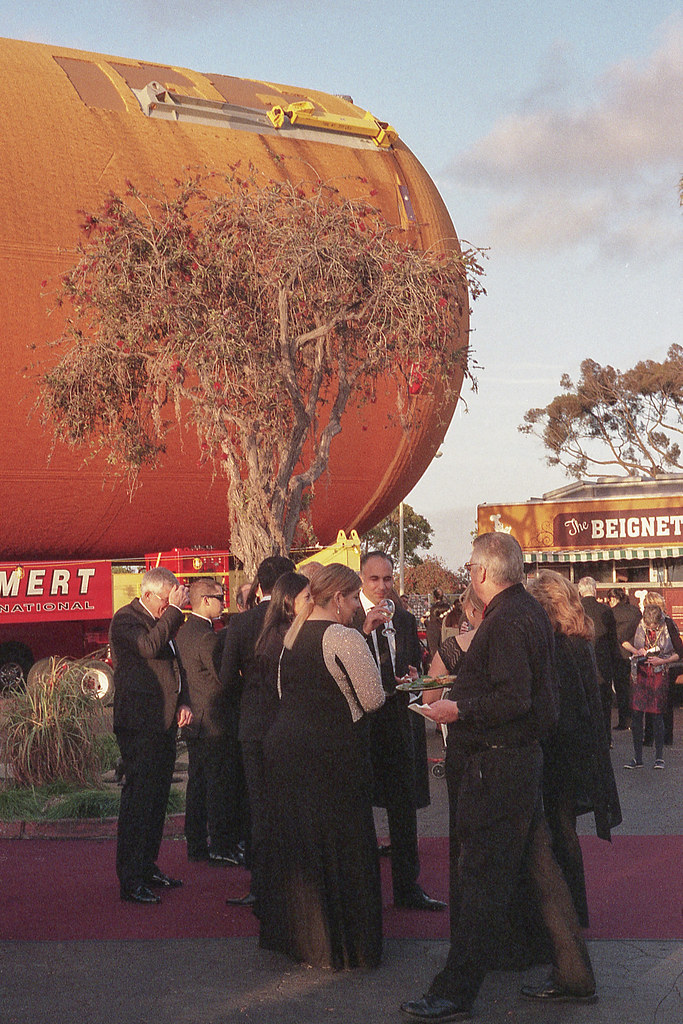
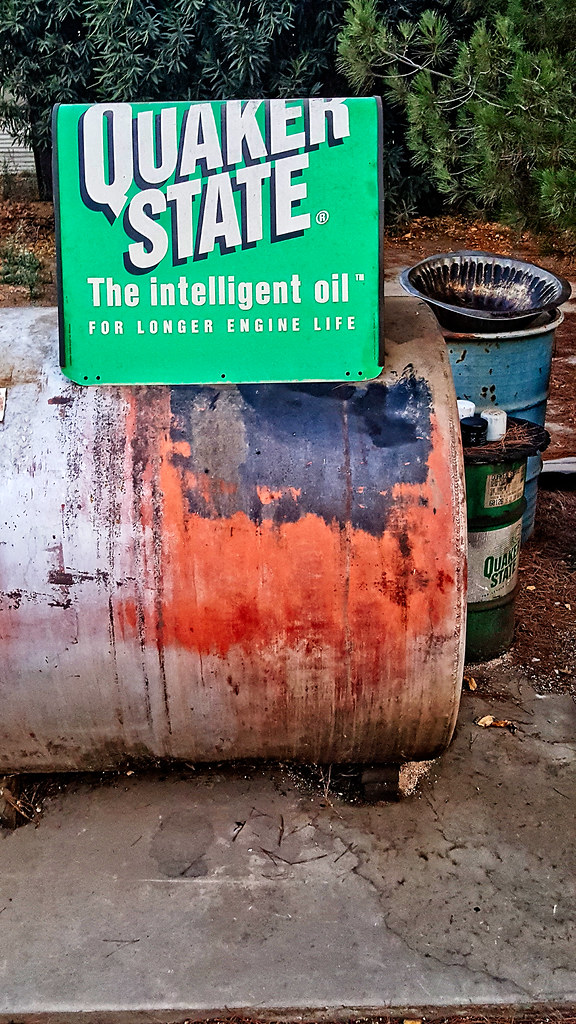
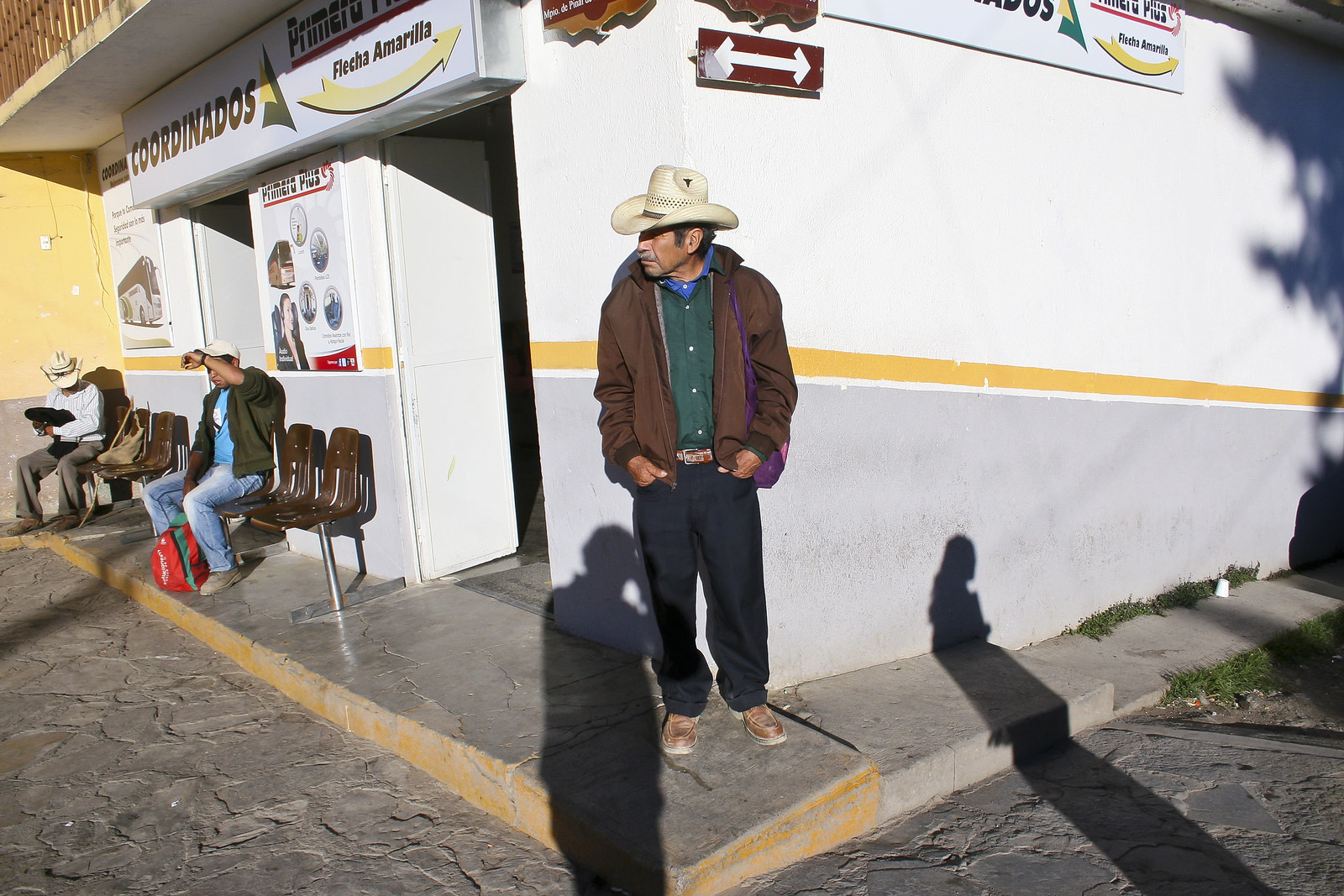
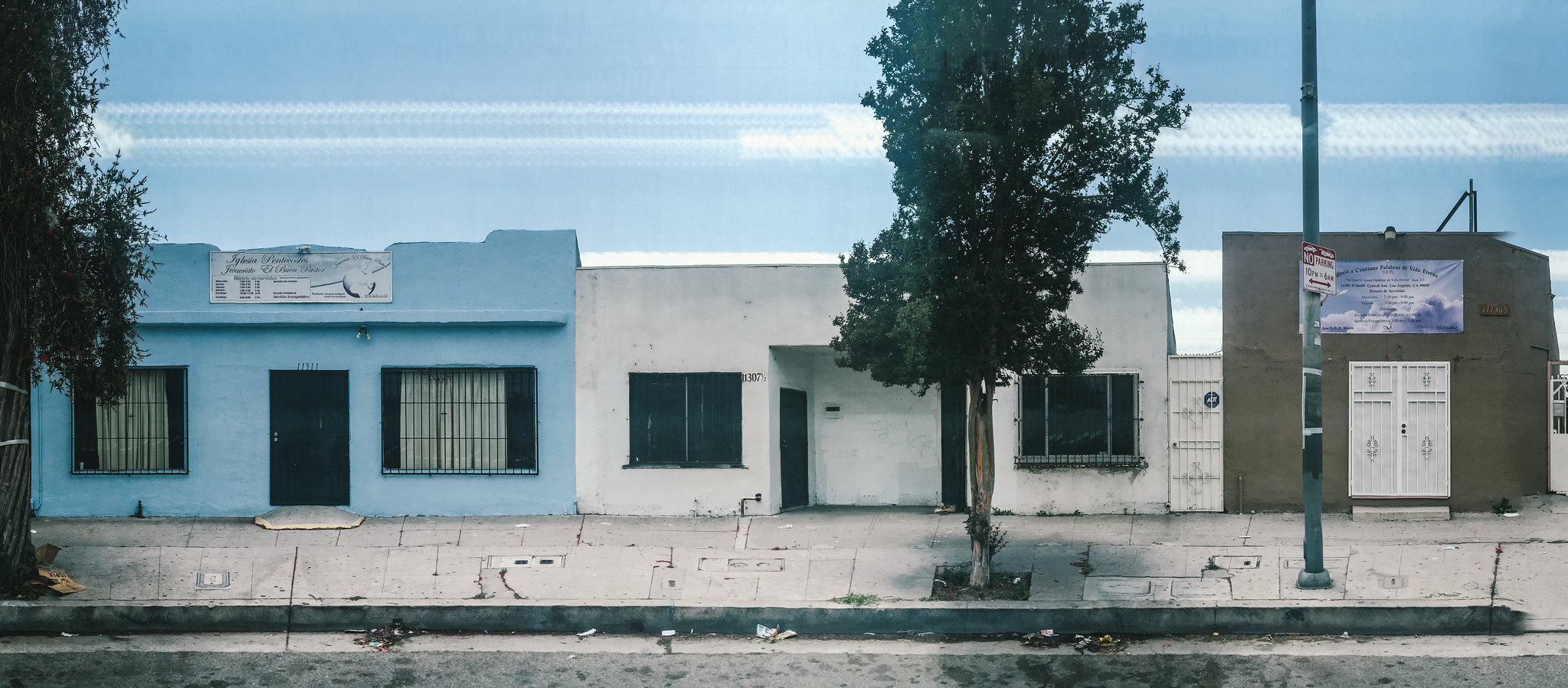
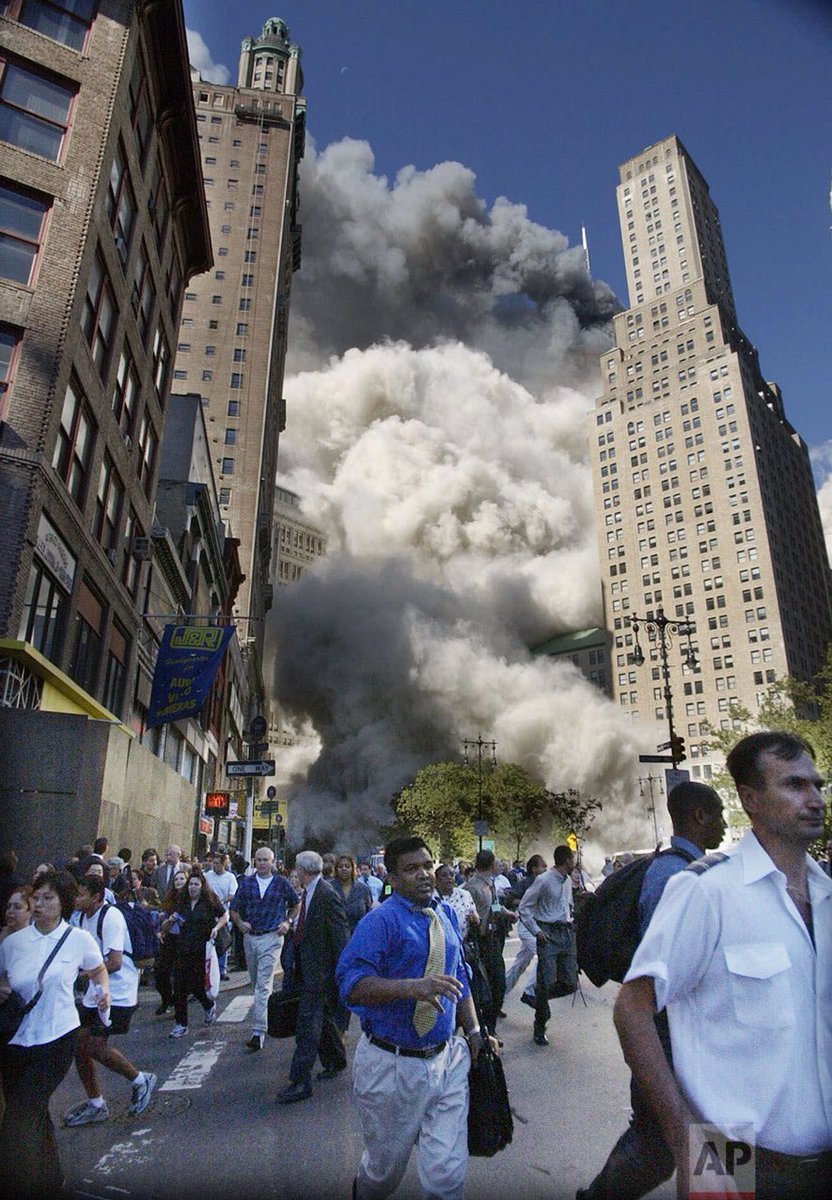
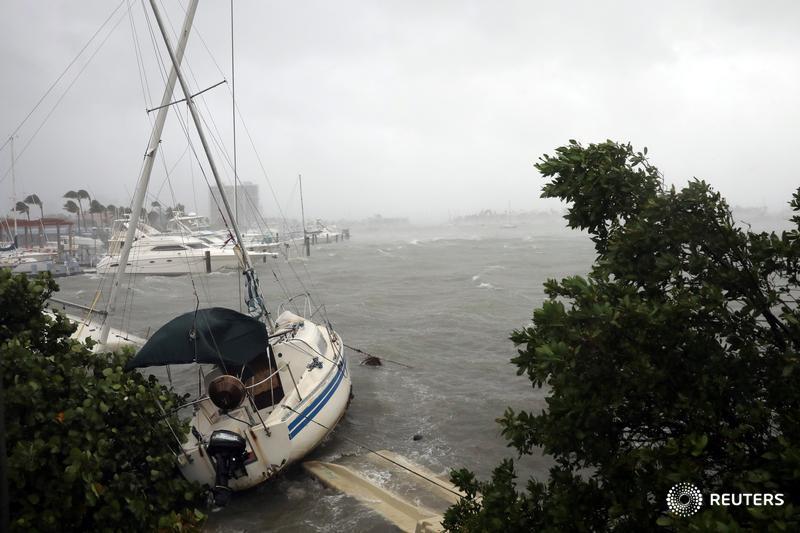


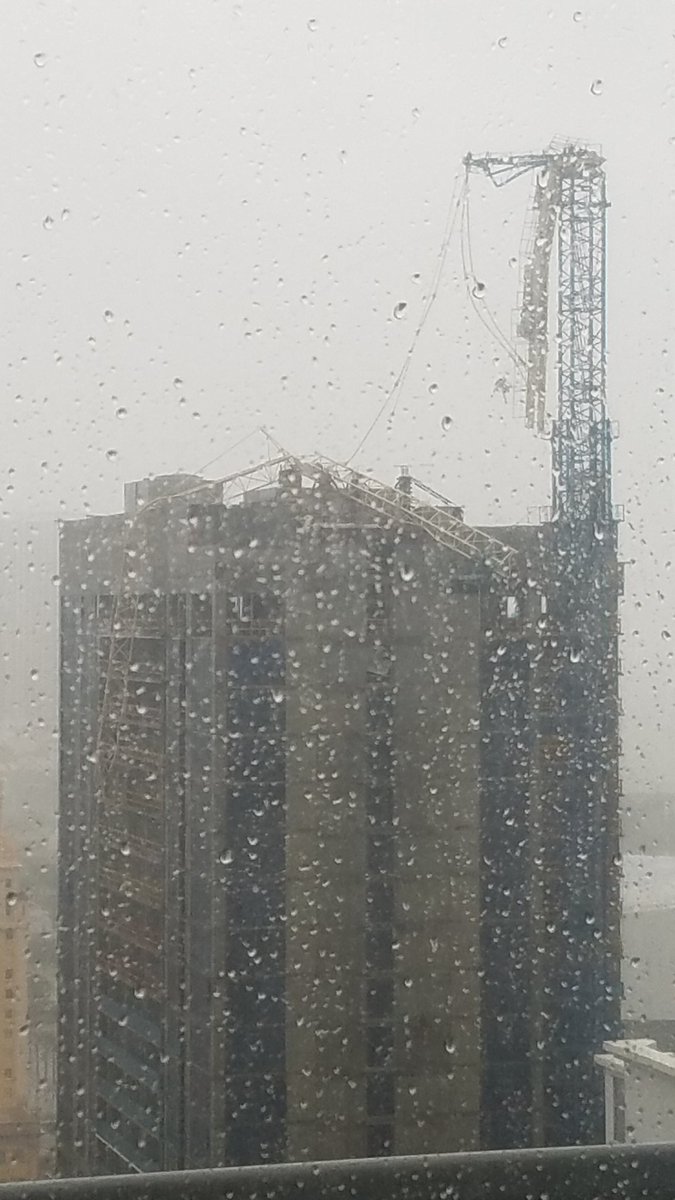






No comments:
Post a Comment